




















PAGE 6
Museum displays many origins of the Coastal Bend region

PAGE 11
Rockport business has weathered storms of all kinds
PAGE 18
Reviving a South Texas Treasure: The Story of the Rialto Theater


PAGE 26
Goliad County man not scaling back on his passion

Page 30
Refugio Bobcat fan supports team any way he can

PAGE 32
Karnes County treasure preserves unique culture


Welcome to the annual edition of South Texas Scene the magazine that delivers information about People, Places and Possibilities. Here at South Texas News, our scene grew after we acquired The Rockport Pilot bringing our total number of local newspapers to nine. We are thrilled and so blessed to add such a fantastic area to our mix.
This year the cover story is about one of the most amazing places in all South Texas and perhaps in all Texas. The Polish Heritage Center is simply a place you must visit. Located in Panna Maria it is easy to get to and hard to leave.
The history of this amazing people, as they settled in Texas, is fascinating and captivating. Of course, there are many other worthwhile and interesting places you can visit in this area, but make sure to make The Polish Heritage Center part of your plans.
Our writers worked hard selecting and then writing about this amazing area we call home. Please take time to read their work and enjoy the number of pictures included. You will not be disappointed.
Thanks and enjoy the South Texas Scene!
Dennis Wade Publisher
PAGE 40
Live Oak County sheriff in it for the long haul
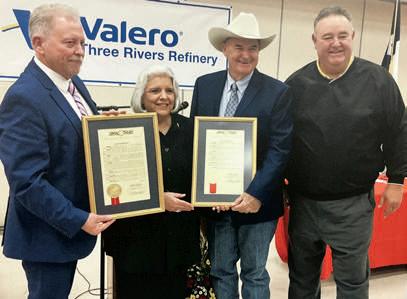

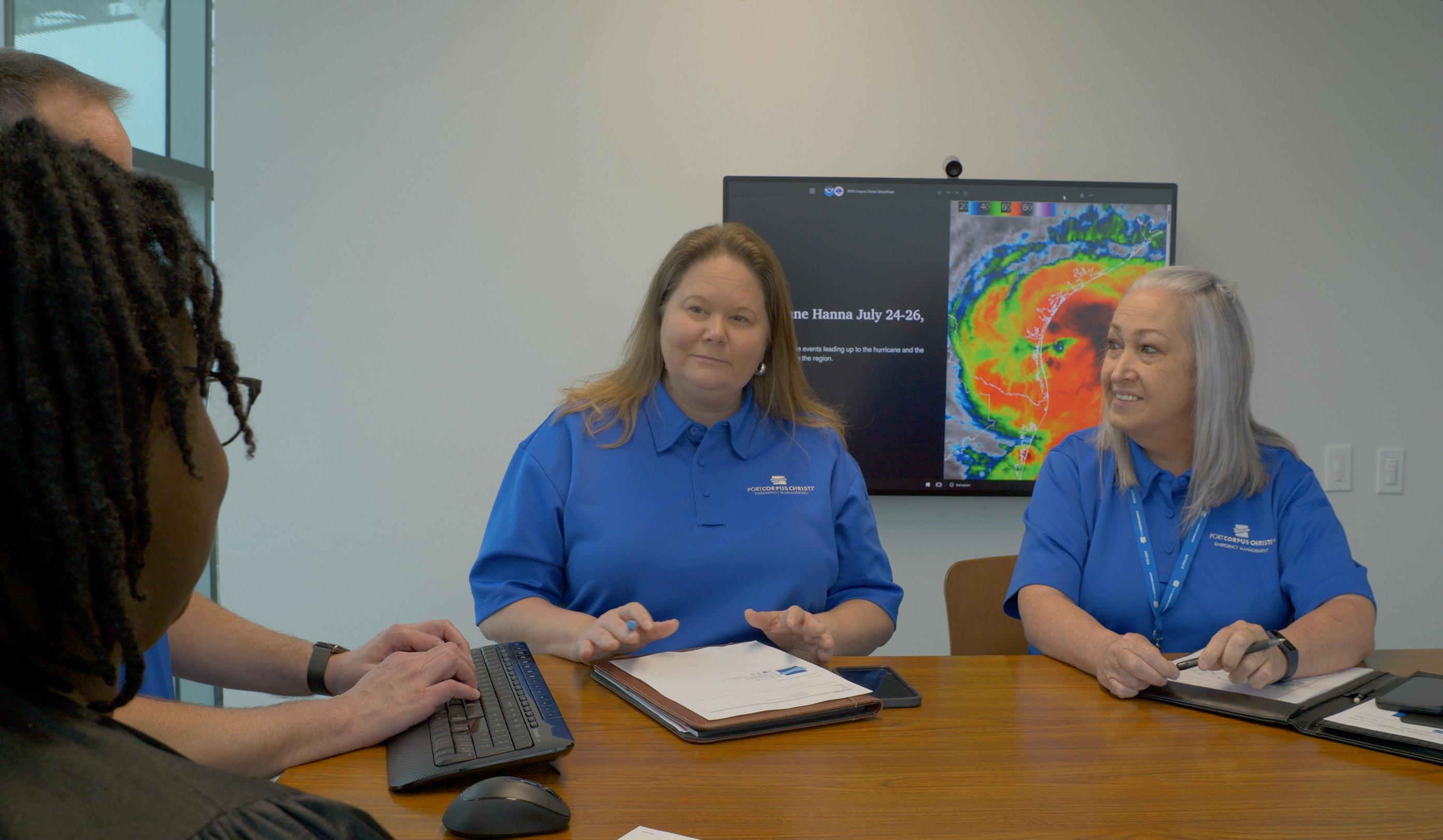






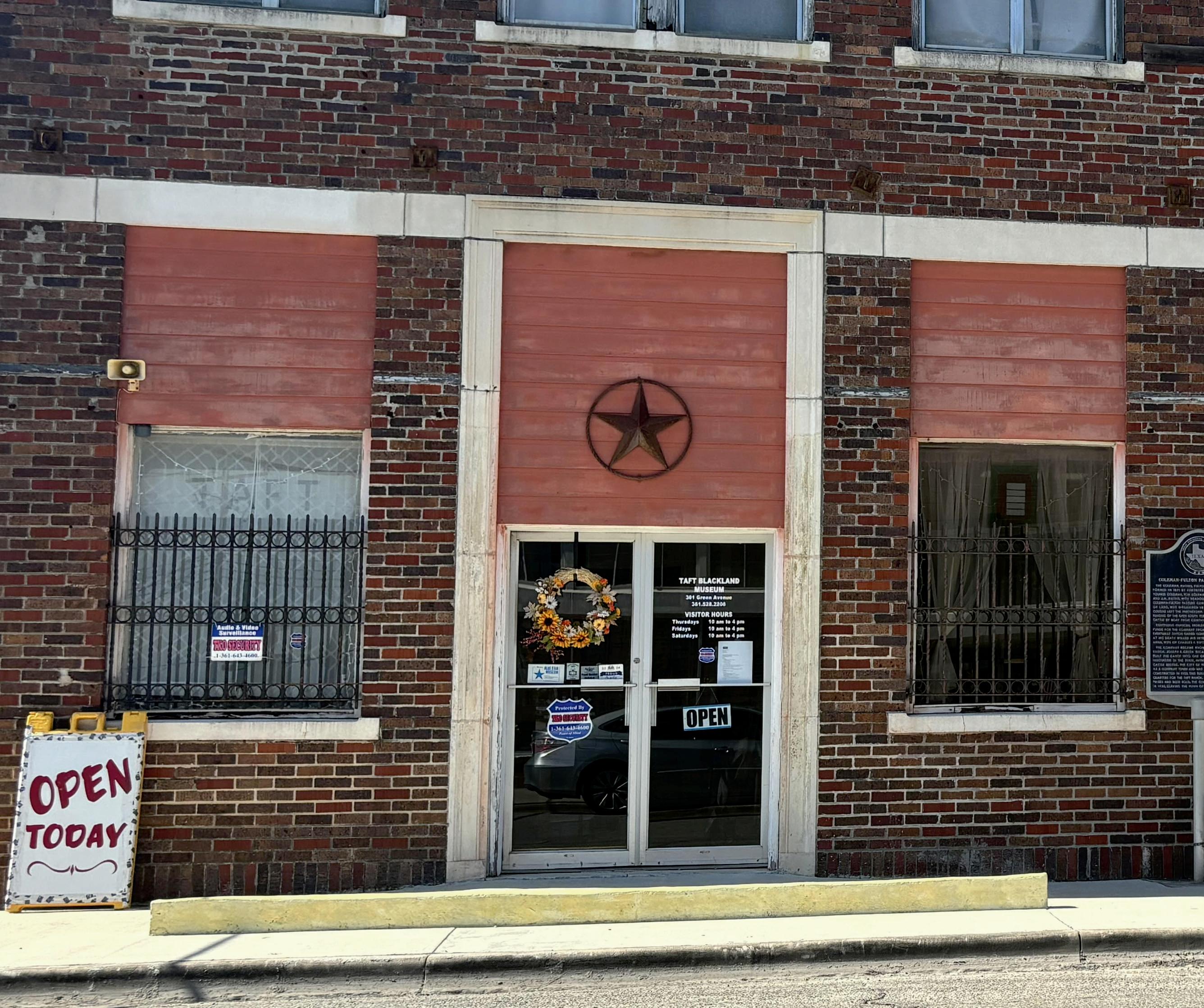
TAFT’S BLACKLAND MUSEUM OFFERS ARTIFACTS AND INFORMATION ON HOW REGION WAS FORMED
Landan Kuhlmann
Tucked away on Green Avenue in Taft sits a fairly nondescript building, a former bank building in the middle of town.
Dozens of passersby drive or stroll past its largely demure building, while those newer to the area may not even know what it is.
Yet inside its humble setting stands a long and rich history of not only Taft, but a large portion of South
Texas and the Coastal Bend.
The museum, which was created in 1979 and opened to the public for viewing in the late 1980s, has sat on Green Avenue for nearly 40 years, teaching anyone who comes in the history of South Texas. And to this day, it still stands as a beacon of a time largely lost to history.

The Blackland Museum is located in the ColemanFulton Pasture Company building, aiming to conserve the company’s historical records, and is recognized as the second-largest repository for the company’s business and books. Littered throughout the museum are photographs, journal entries and more from the early days of Coleman-Fulton and information on how several swaths of South Texas came to be.
According to information from museum owner Sue Zimmerman, during a personal tour of the museum earlier this year, Coleman-Fulton originally formed in the early 1870s as a partnership between George Ware Fulton, Tom Coleman, Youngs Coleman, and Mathis cousins Thomas Henry Mathis and J.M. Mathis.
It later became Coleman-Fulton Pasture Company in 1879 after the Mathis cousins chose to depart from the partnership.
Originally headquartered in Rockport, the company owned nearly 170,000 acres of land by the turn of the century, which stretched west across San Patricio County and a large portion of South Texas. Financial problems later led Fulton to obtain loans from David Sinton of Ohio in the late 1800s, and Sinton would later will his majority stake in the company to his daughter Anna – who was married to Charles Taft.
The Coleman-Fulton building currently housing the Blackland Museum is a designated Texas historical marker. According to the Texas Historical Marker
Continued on page 8.
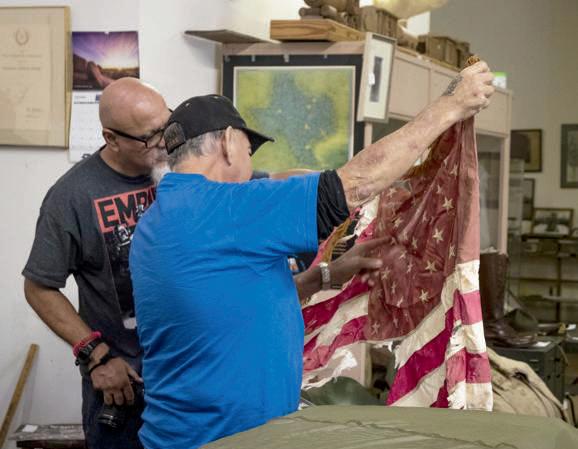
A museum guide describes a flag to a patron during a Veterans Day opening at the Blackland Museum in 2018. Staff file photo
Association, the city of Taft itself was formed in the early 1900s as a company town. The city was later sold at auction in 1921, and the current Blackland Museum building was built in 1923.
By 1928, the Texas Historical Marker Association said all Coleman-Fulton Ranch enterprises had been sold while its charter expired just two years later – leaving the city of Taft as its mark on history.
For the better part of four decades, the Blackland
Museum has been home to a hefty and impressive collection of archives, documents, photos, and a research library. It also contains various Mayan pottery, Native American Indian artifacts, minerals and fossils, military items and Boy Scouts of America collections, medical, art, artifacts, ranch equipment, town historical items, cultural displays, furniture, agricultural, and antique farm equipment dating back to the town and Coleman-Fulton’s earliest days.
Continued on page 10.


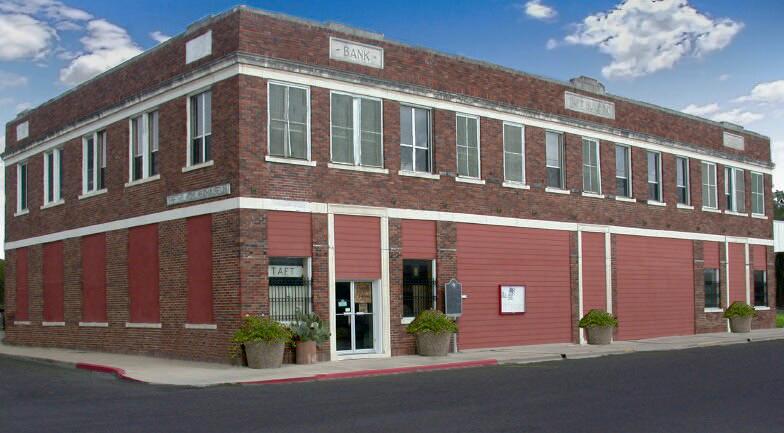
The Blackland Museum is open to the public Thursday through Saturday.
So whether you’re a longtime South Texan or a transplant, there is a perfect spot in which to delve into the history of South Texas and how the Blackland Museum and Coleman-Fulton Pasture Company spawned much of what became much of the Coastal Bend.
“You could look at us and say we are probably the most Texan area in all of Texas. ... To really understand the story of Texas, you have to look at your own backyards and communities and the Taft Blackland Museum does an excellent job of doing that for San Patricio County,” said Joseph Fox, a former educator for the Fulton Mansion.
The museum is located at 301 Green Avenue in Taft, and is open to the public Thursday through Saturday. For more information, call the museum at 361-528-2206.
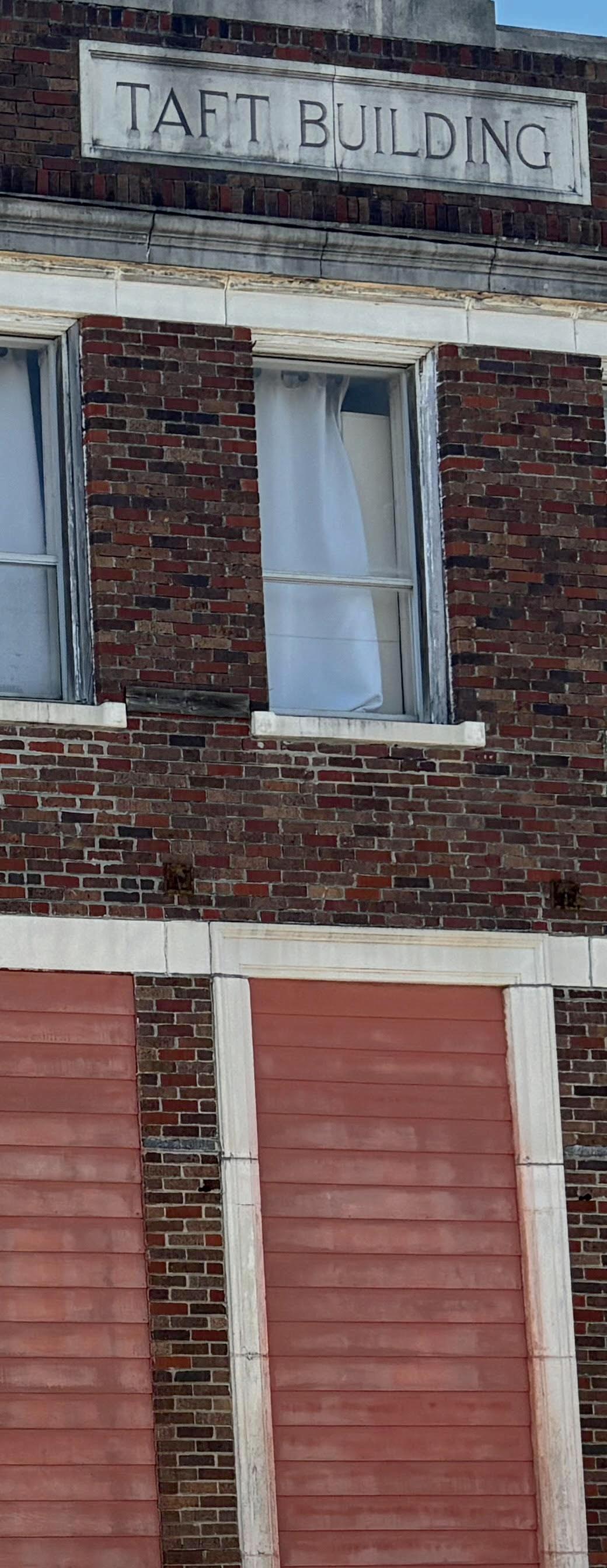
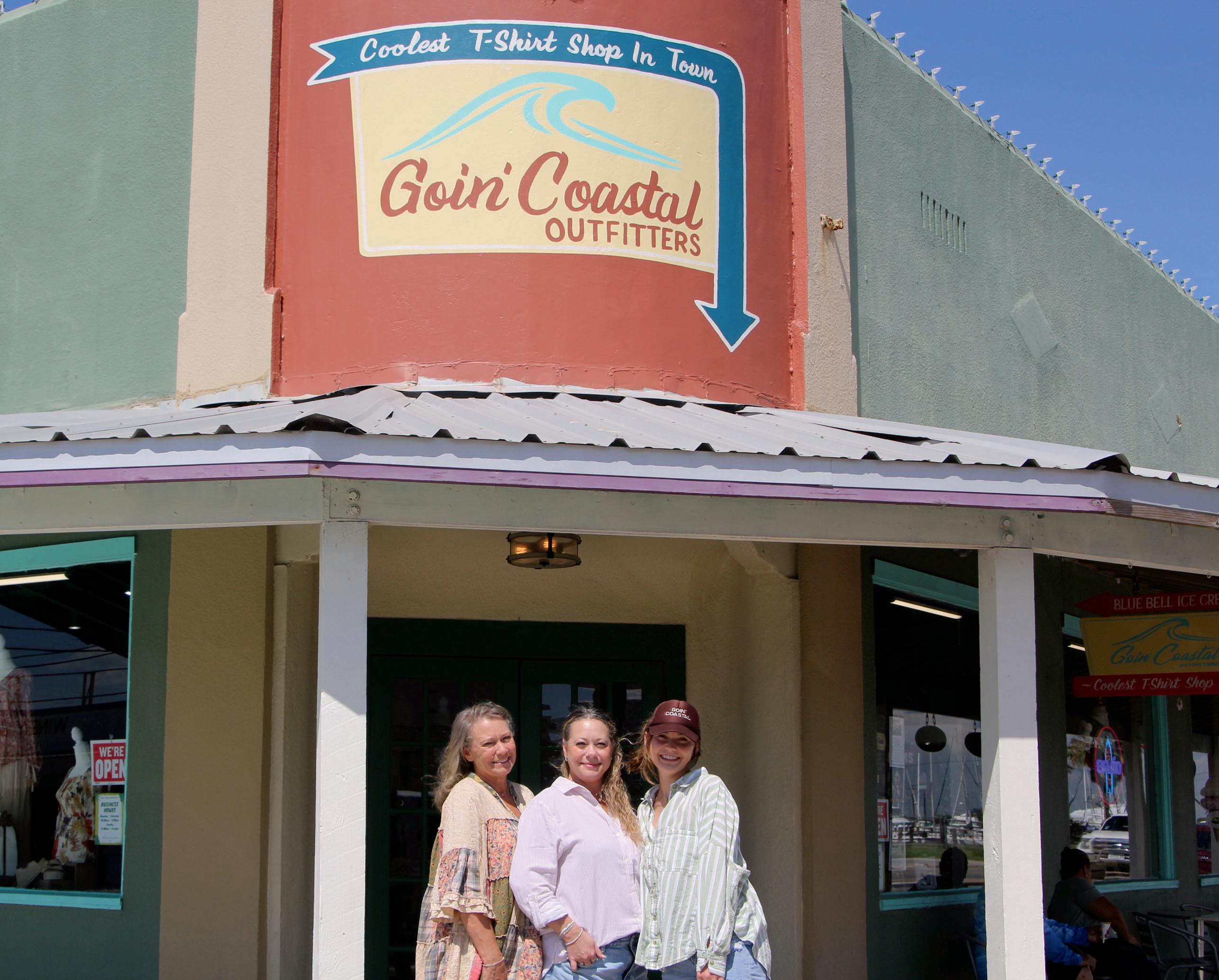
Walter Perry
In the small coastal town of Rockport, there’s a T-shirt shop with a big heart and an even bigger story.
More than just a place to buy local gear, Goin’ Coastal Outfitters (GCO) has become a symbol of survival, hope, and the unbreakable spirit of community. Founded by Sharon Miller and her family in 2017, GCO has weathered literal and figurative storms, emerging stronger – much like Rockport itself.
GCO’s success wasn’t the result of a grand plan. Miller, who never dreamed of owning a business – let alone becoming a local hero – found her inspiration on a family road trip. They had visited a charming T-shirt shop, and something about its simplicity and warmth resonated with Miller. It wasn’t just about selling shirts; it was



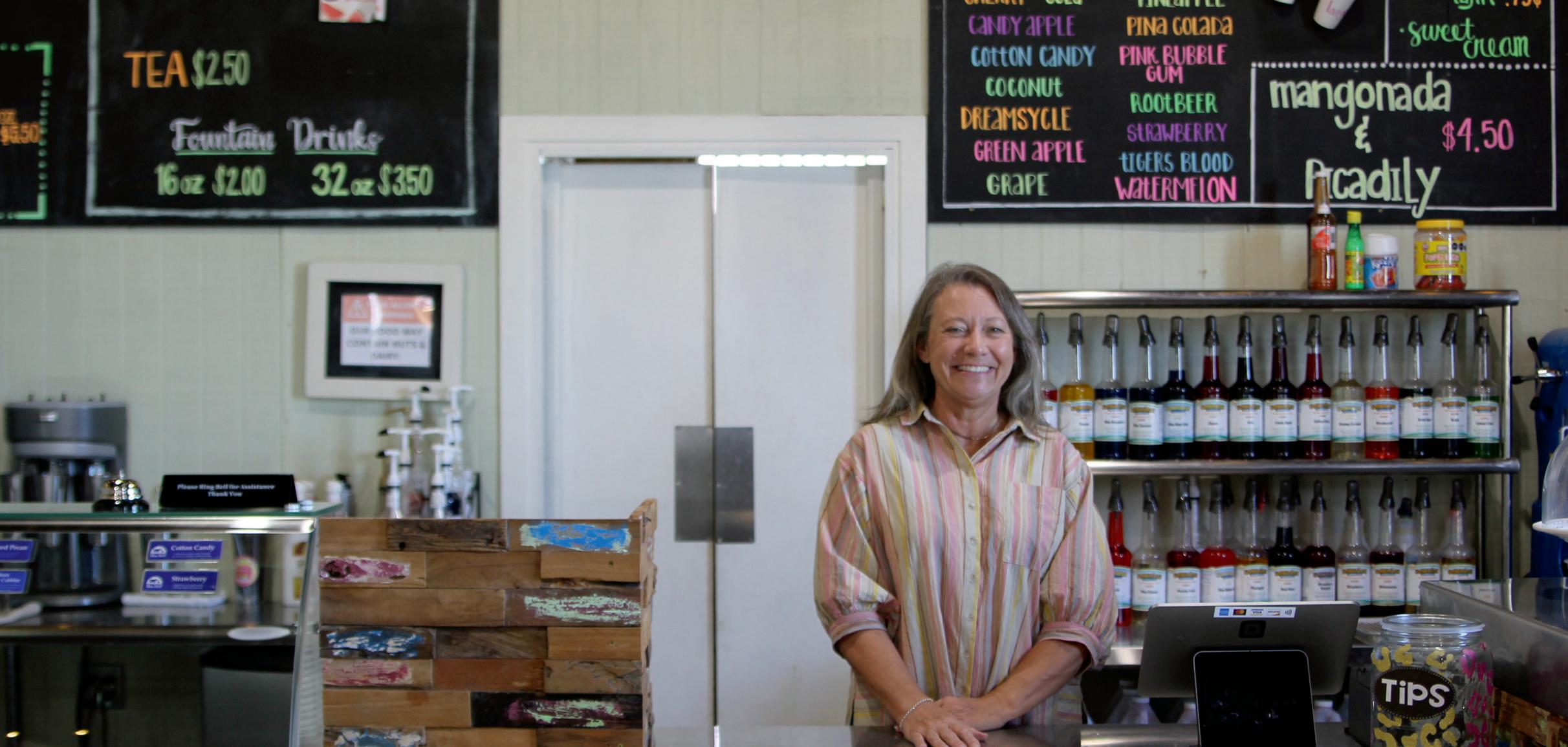
about connection – between people and a shared love for local culture.
A longtime retail manager, Miller shared the idea with her daughters. Her youngest, Hanna, was studying marketing, while her eldest, Abigail, was immersed in architectural design. With their complementary skills, they decided to turn the idea into a fun family project, selling at local markets and festivals.
“It was just something we thought we could do for fun,” Sharon recalls. There were no ambitions of creating a business empire – just a way to connect as a family and share a piece of Rockport with the world.
The Millers dove in with heart, creativity, and purpose. Sharon ran operations, Hanna handled inventory, and Abigail designed unique, thoughtful graphics. GCO quickly gained momentum, but just months after launching, disaster struck.
In August 2017, Hurricane Harvey ravaged Rockport, including the Millers’ home. While they lost much, their T-shirt inventory – stored in plastic bins –miraculously survived the flooding.
“Our screen printer was ruined, but those shirts stayed dry,” Sharon says, still in awe of the small victory amid the chaos.
Determined to help their community in the hurricane’s aftermath, the Millers partnered with George Screen Printing, which donated 100 shirts. The
Millers printed “Rockport Strong” in bold letters, and the shirts became a powerful symbol of resilience.
“We sold out in 15 minutes,” Sharon remembers.
The community rallied behind the message, and GCO soon found itself producing thousands of Rockport Strong shirts, turning a small family project into a beacon of hope and unity.
For Sharon, GCO is more than a business – it’s a family endeavor. Her husband, Levi, has supported the venture from the start, and her sister, Cassandra has played vital roles in its success. Abigail’s architectural skills shine through in the shop’s designs, and every T-shirt they sell reflects the family’s creativity and dedication.
“It’s important to me as a mom to have my kids involved,” Sharon says. “I hope this business can provide for them long after I’m gone.”
But the Millers’ sense of family extends beyond their immediate circle. GCO has fostered a deep connection with its customers, many of whom feel like part of the family.
“Everyone who walks in becomes part of our extended family,” Sharon adds. Whether they’re locals or tourists, the shop offers a welcoming space for all. Sharon’s commitment to Rockport goes beyond her shop. Through creative events like Gun Purse Bingo, GCO funds scholarships for local students pursuing
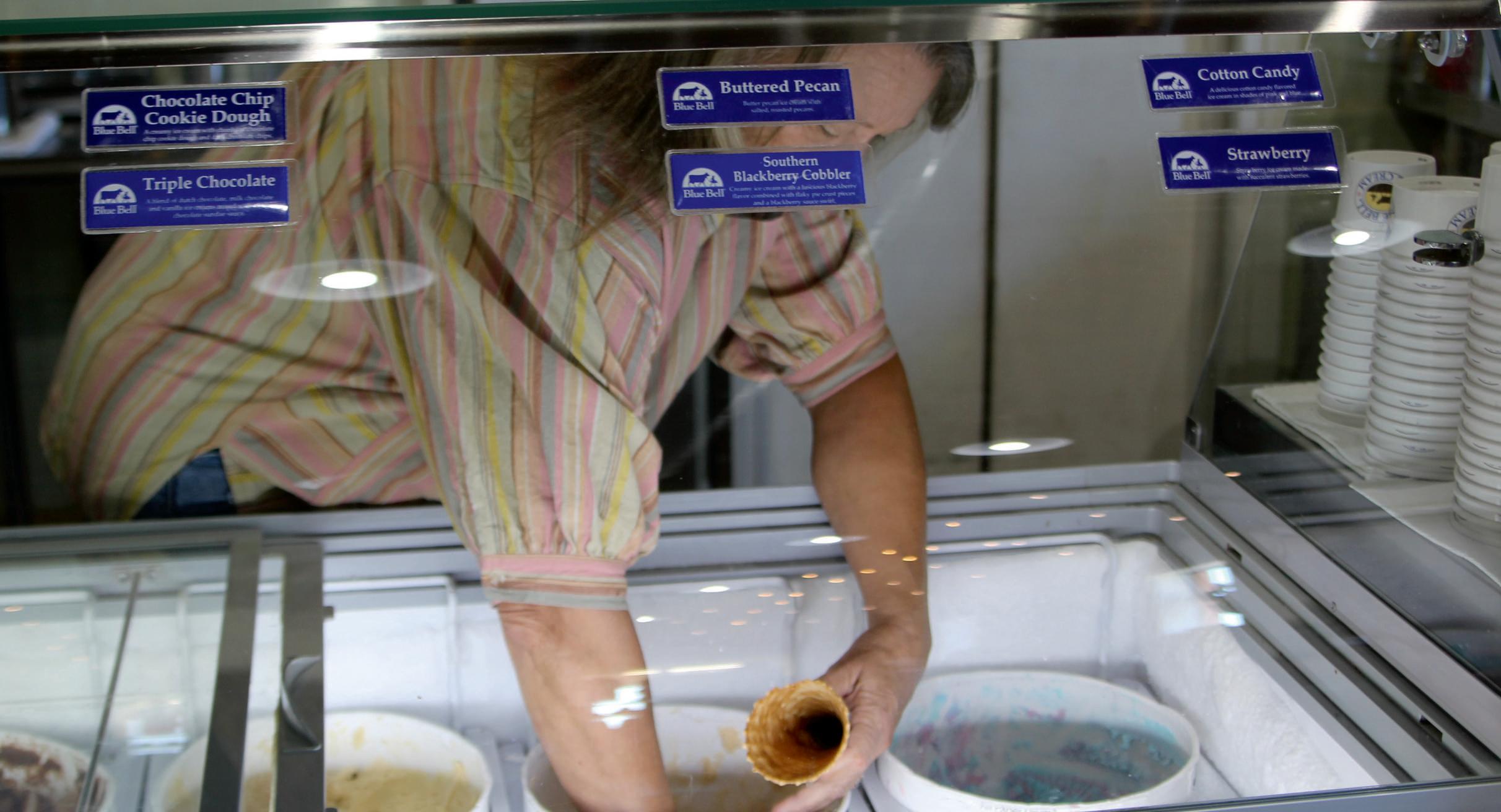
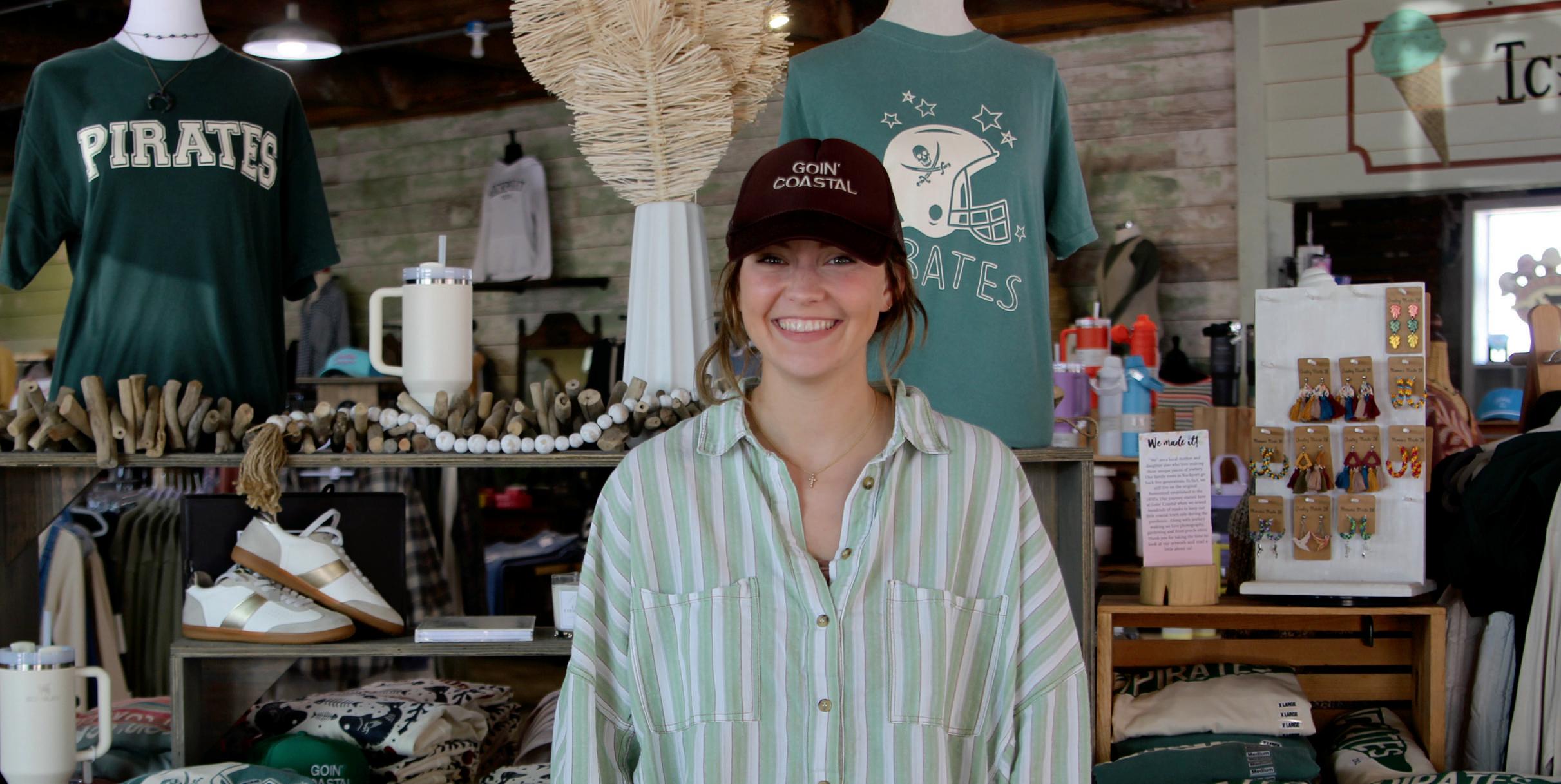
higher education or trade schools.
“We need to support our young people,” Sharon says. “If we want Rockport to thrive, we have to invest in the next generation.”
Her faith is also a cornerstone of her work. Each week, she hosts a Bible study in the shop, providing a space for fellowship and reflection. “It’s become something bigger than just selling shirts,” she reflects.
“We’ve built a little community of people who support each other, pray together, and enjoy each other’s company,” she says.
As Rockport rebuilds, Sharon is optimistic about the town’s future, particularly with the establishment of the Tax Increment Reinvestment Zone (TIRZ) downtown, which is designed to attract more visitors and boost the local economy.
“It’s going to bring more foot traffic and energy to the area,” she says.
Sharon has also spearheaded local initiatives like Summer Fest and Kids in Biz, events that draw tourists and keep the downtown scene vibrant.
“We need to remind people that Rockport is alive and well. We’re not just surviving – we’re thriving.”
For Sharon, GCO’s story underscores the importance of supporting small businesses – especially in closeknit towns like Rockport.
“Every time someone buys a shirt from us, they’re not just supporting a business,” she says. “They’re supporting a family, a community, a way of life.”
In an increasingly disconnected world, Sharon believes that kind of support is more important than ever. By choosing to shop local, people invest in the heart and soul of their community.
As she looks to the future, one thing is clear: Goin’ Coastal Outfitters will always be more than just a shop. It’s a symbol of what’s possible when a family, a community, and a town come together. Through storms and sunshine, GCO will continue to stand strong – just like the people of Rockport. • • • •








Dylan Dozier
In the heart of Downtown Beeville, a piece of South Texas history is being brought back to life.
The Rialto Theater, originally built in 1922, has long stood as a beacon of culture and entertainment for the community. Today, thanks to the tireless efforts of the Hall-Rialto Preservation Association (HRPA), this iconic structure is on the cusp of a renaissance.
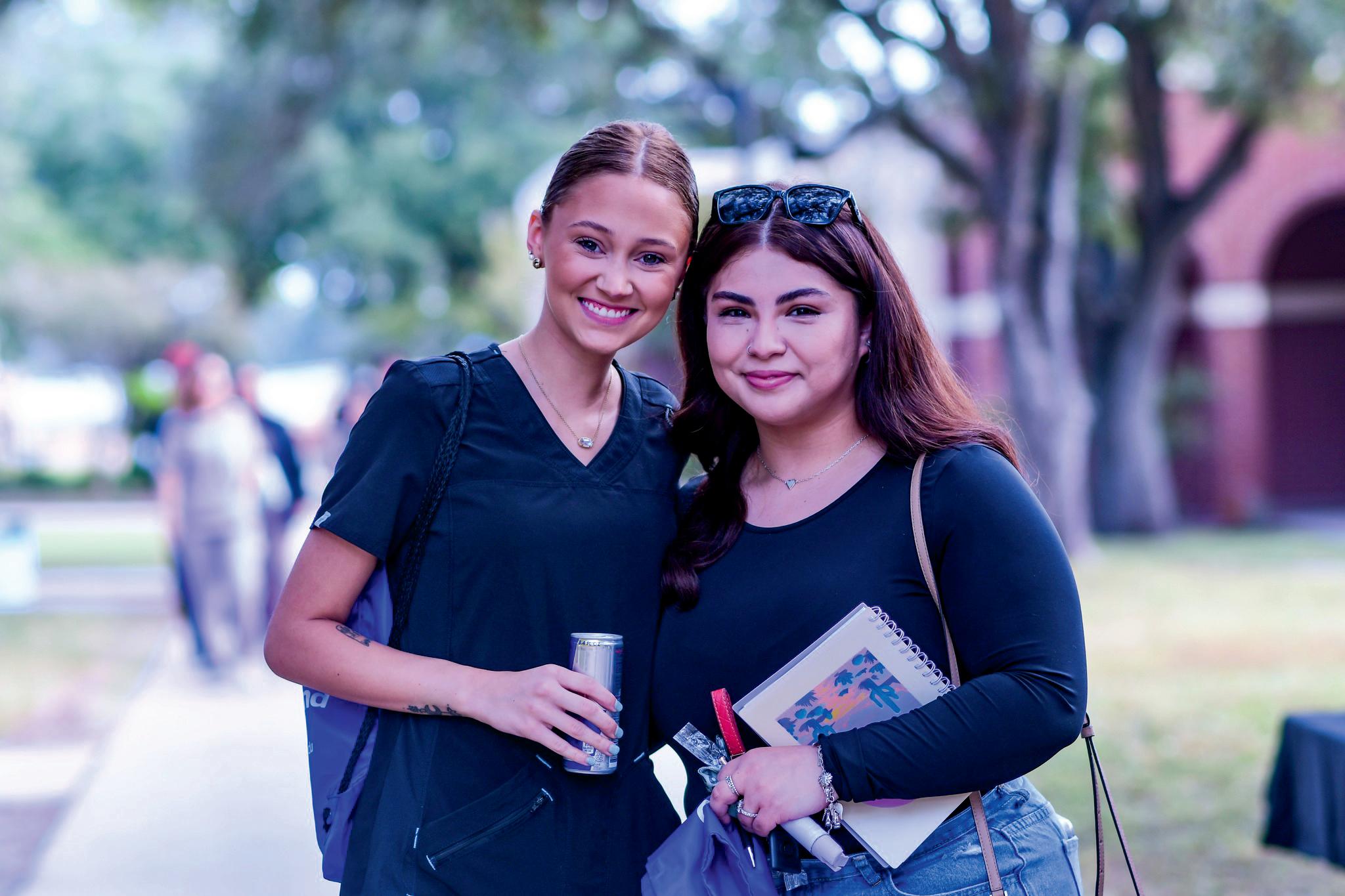
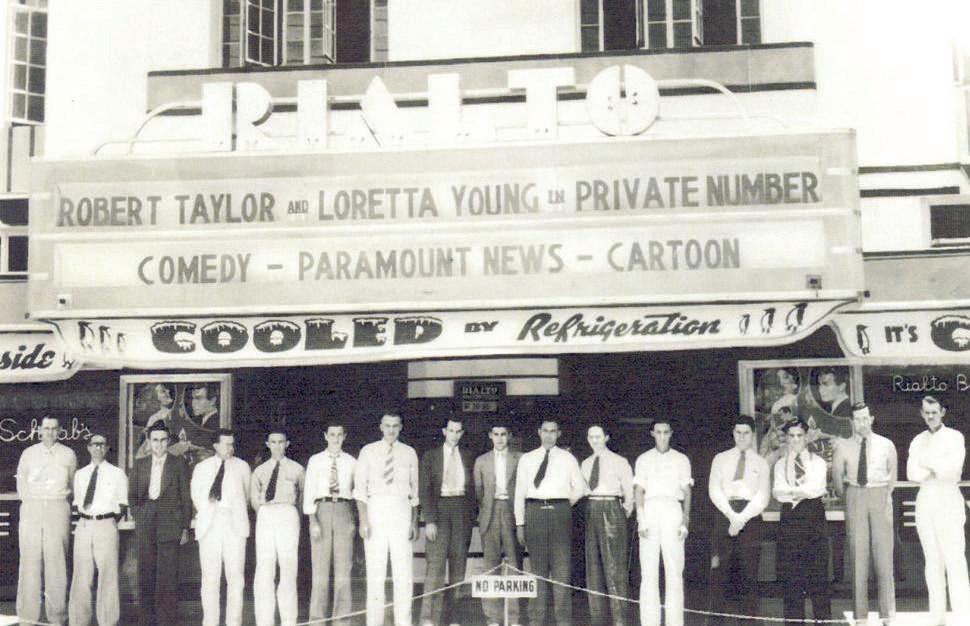




The HRPA, established in 1991, is dedicated to restoring the historic theater and transforming it into a vibrant, multipurpose performing arts and cultural center for the South Texas region. Its goals are to preserve and restore the Rialto, to create a space for bilingual theater and cultural programs, and to expand community outreach throughout the region.
The association also seeks to ensure that the theater is recognized across Texas for its architectural beauty and contribution to the performing arts. As one of only eight theaters in the state listed on the National Register of Historic Places, the Rialto is truly a cultural gem.
The Rialto Theater’s story began on March 2, 1922, when Henry and Sydney Hall announced plans to construct a two-story brick-and-tile movie theater at 114 N. Washington Street in Beeville’s main commercial district. The $25,000 project, overseen by foreman Homer Boots, was completed in just five months, and the theater officially opened its doors on Aug. 19, 1922.
The opening night featured a screening of The Three Musketeers, starring Douglas Fairbanks, with tickets priced at 25 cents for adults and 10 cents for children. However, the night wasn’t without its challenges. A $10,000 pipe organ, a key element of the theater’s sound system, was delayed due to a railroad strike. Additionally, a fuse blew when the theater’s marquee lights were first switched on. Despite these setbacks, an orchestra was hired to provide live music for the silent film and the show went on, with over 1,300 tickets sold for two showings.
Designed by W.C. Stephenson, the architect behind the Bee County Courthouse and dozens of other Beeville landmarks, the original Rialto Theater was a Classical Revival-style structure, harmonizing with the adjacent buildings. However, the theater stood out for its innovative features, including over two miles of electrical wiring, 420 lights, and a cuttingedge “Typhoon” cooling system that made the theater comfortable in Beeville’s scorching heat.
The Hall Brothers, Henry and Sydney, were pioneers in theater innovation. In addition to the Rialto’s unique cooling system, they established South Texas’ first radio station, KFRB, on the roof of the theater in 1924. By 1929, sound came to the Rialto with the installation of a Western Electric sound system designed by Bell Laboratories.
In 1935, disaster struck the Rialto when a fire in the basement destroyed much of the theater’s interior. Undeterred, the Hall Brothers enlisted renowned theater designer John Eberson to redesign the space. Eberson, famous for his atmospheric theaters like the Majestic Theaters in Dallas and San
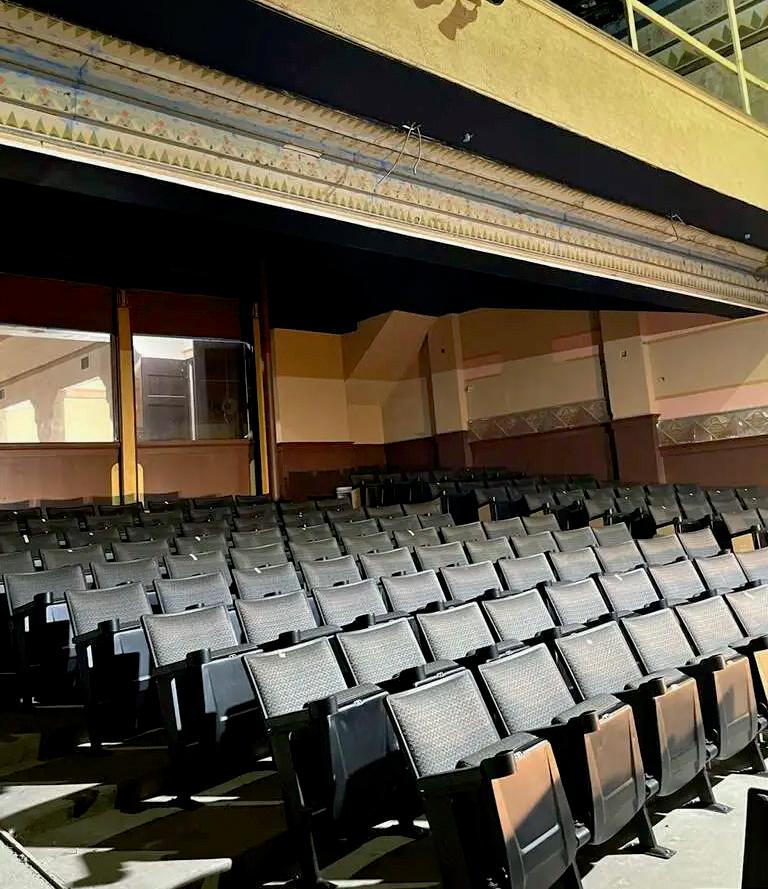



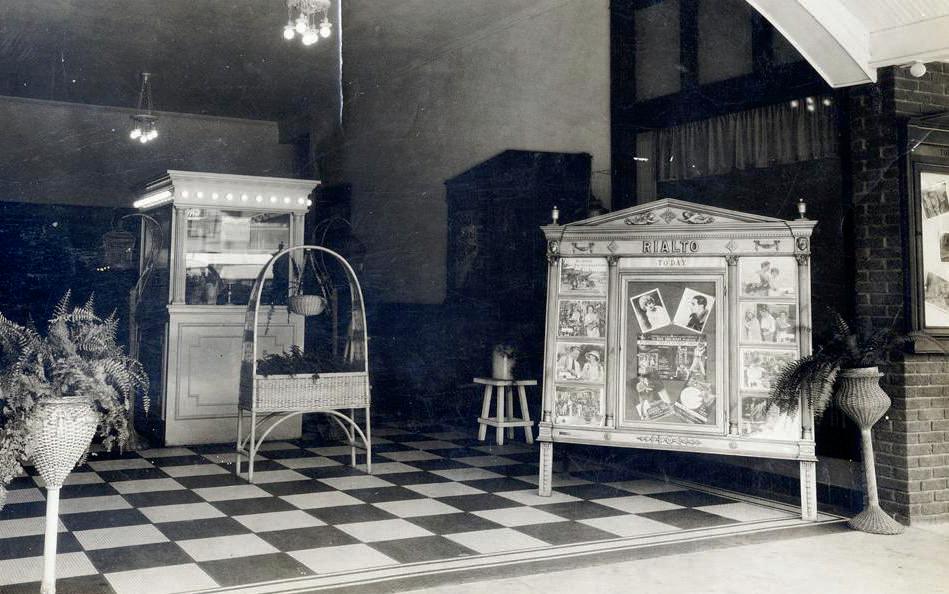
When it opened in 1922, the Rialto Theater was the social center of Bee County. It remained a center of activity in Beeville right through the 1960s and many residents still remember going there for their first date.
Antonio, transformed the Rialto into an Art Deco masterpiece. The revamped design, completed in 1936, was a seamless blend of office, commercial, and entertainment functions.

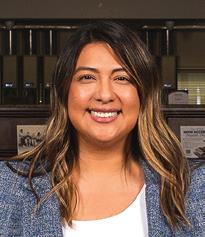
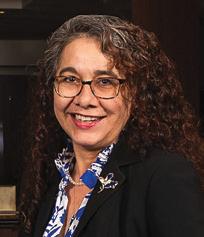
debit
mobile deposits, loans, treasury management services and more. Take comfort in knowing our staff also has a combined 140+ years of
Eberson’s work on the Rialto is among his last known designs, making the theater an even more valuable piece of Texas’ architectural history. The 1936 remodel also introduced state-of-the-art cooling systems, capable of producing 45 tons of ice each day to maintain a cool 20-degree drop in temperature inside the theater, regardless of the weather outside.
For 64 years, from its opening in 1922 to its closure in 1986, the Rialto Theater remained a pillar of Beeville’s cultural scene. During the Great Depression, the theater hosted “Bank Night” promotions, offering prizes to draw in patrons. During World War II, it became a venue for promoting the sale of U.S. War Bonds, attracting Hollywood stars like John Wayne and Richard Widmark to its stage.

The theater also had its share of challenges. In 1967, the basement flooded after excessive rainfall from Hurricane Beulah. Yet the Rialto persisted, providing entertainment and cultural experiences for generations of Beeville residents.
In 1991, the HRPA was formed to rescue the closed

theater and restore it to its former glory. Since then, the organization has raised over $700,000 in donations from both public and private entities, including H-E-B, the Texas Historical Commission, and the Joe Barnhart Foundation. With these funds, the HRPA is in the final phase of its effort to reopen the theater.
The restoration has been meticulous, respecting the theater’s historical significance while equipping it for modern use. The association’s vision extends beyond merely preserving the building’s architectural beauty; it aims to revitalize the theater as a cultural hub, offering performances, bilingual theater, and community outreach programs for South Texas.
The Rialto Theater celebrated its 85th birthday in 2007, marking the occasion with a season of performances that included The Messiah, a Patsy Cline tribute band, and a children’s theater workshop. The HRPA’s work ensures that the theater will continue to be a space where South Texans can experience live performances and cultural events for generations to come.
With its rich history, architectural beauty, and role as a cultural icon, the Rialto Theater is poised to once again be a shining pearl in the heart of Beeville.




by Coy Slavik
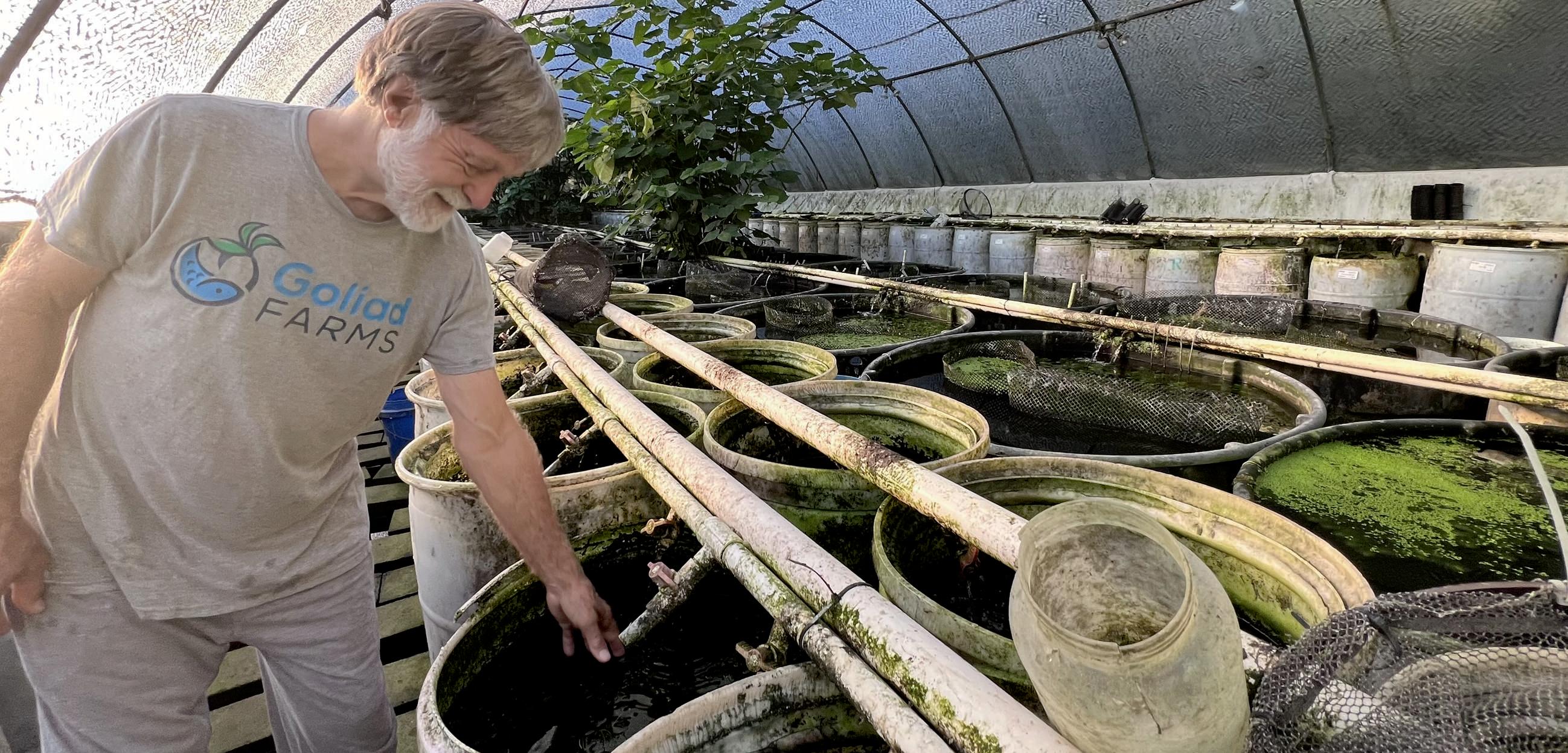






Coy Slavik
Charles Clapsaddle’s life-changing moment came at the age of 6 when he brought home several goldfish that he had won at the Goliad County Fair carnival.
“I put them in a water trough on our farm and they spawned,” Clapsaddle recalled.
Clapsaddle later caught mosquito fish and mollies at nearby Coleto Creek and raised them on his family’s farm between Schroeder and Goliad on Farm-to-Market Road 622 in Goliad County.
Little did Clapsaddle know at that time that he was setting the stage for one of South Texas’ largest tropical fish hatcheries.
GOLIAD FARMS IS LOCATED AT 8497 FARM-TO-MARKET ROAD 622 IN GOLIAD COUNTY. VISITS TO THE FARM CAN BE SCHEDULED BY APPOINTMENT. FOR MORE INFORMATION, VISIT GOLIADFARMS.COM
The family-owned Goliad Farms has produced awardwinning tropical fish for over 30 years. The hatchery raises approximately 270 varieties of fish, caters to retail stores across Texas and ships nationally and internationally. Major customers include aquarium maintenance services such as fish galleries and aquatic interiors and hobbyists.
The farm specializes in African and New World cichlids, but also raises livebearers, live food, bullfrogs, invertebrates such as shrimp and snails, and aquatic plants. Clapsaddle has developed unique strains of cichlids, including the Lake Malawi Auloncara or “peacock cichlid,” which is one of his top sellers.
Clapsaddle, who has a Bachelor of Science degree in Zoology from The University of Texas at Austin, started raising show guppies when he was 12. He later worked at the “Fish Nook” in Victoria and used the earnings from selling killifish and bettas to help pay for his college education.
“I always liked figuring out how to best breed them and how to make them comfortable enough to breed,” Clapsaddle said.
Clapsaddle started his first fish farm in 1997 when he was residing in Santa Fe, New Mexico. In 2001, Clapsaddle moved back to his grandparents’ Goliad County farm where his fish breeding began.
“It took us a little over a year to completely move the hatchery,” said Clapsaddle, whose wife, Susie, serves as Goliad Farms’ business manager.
Goliad Farms has not been without its challenges. Clapsaddle lost 85% of his inventory of 40,000-50,000 fish during the 2021 winter storm.
“We’re just now getting back up,” Clapsaddle said. “We had six days of sub-freezing weather and clouds. We can handle the sub-freezing weather as long as it’s not cloudy. If we take the shade cloth off the greenhouses, it can be 20 degrees outside, but if it’s sunny, it can be 100 degrees in there.”
Last year’s record-breaking heat wave greatly decreased the reproduction numbers of the fish.

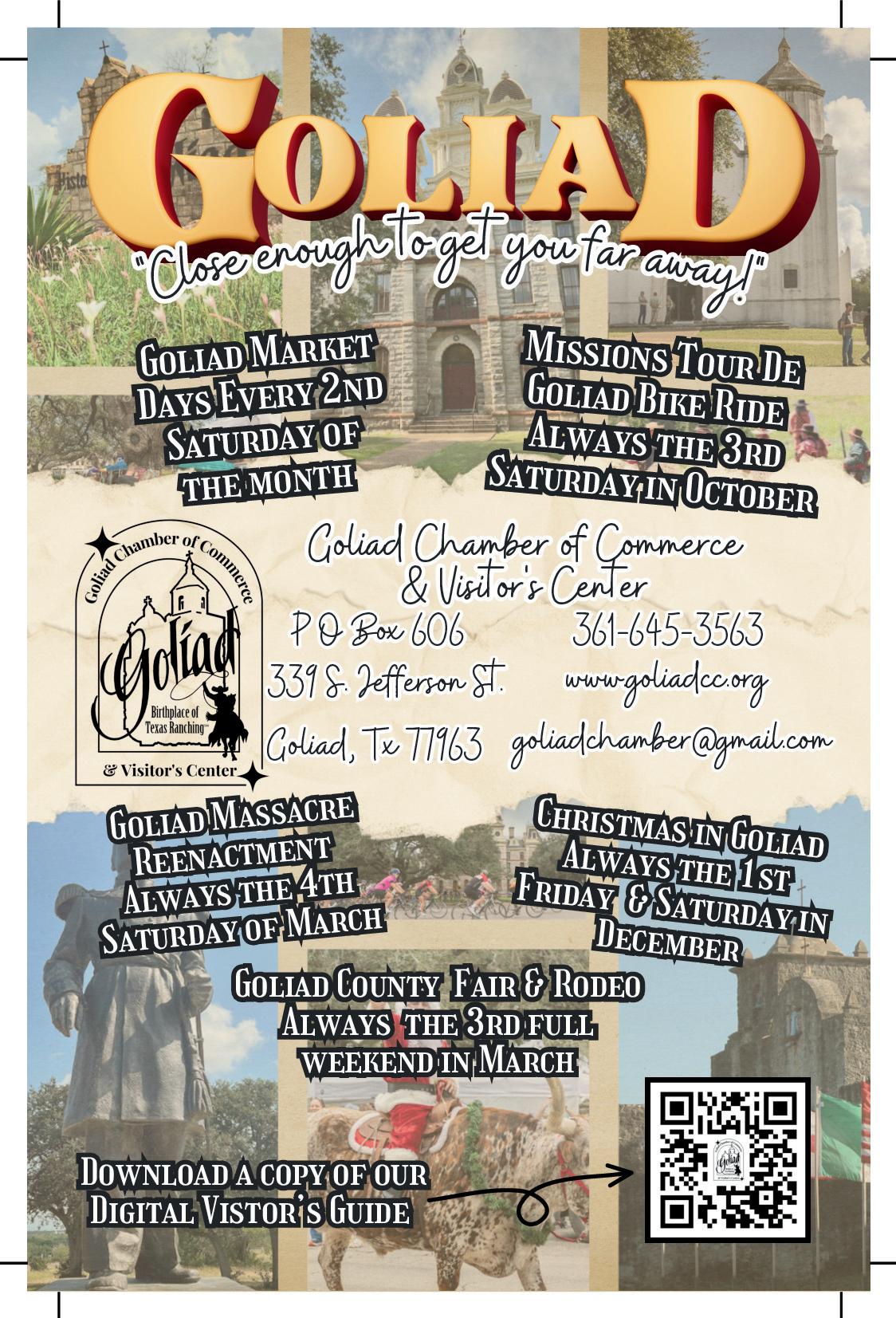
Hurricanes Claudette (2003) and Harvey (2017) also caused severe damage and halted operations.
Along with harsh weather conditions, the two greenhouses where the tanks are stored are often invaded by raccoons, o’possums, and water snakes looking for an easy meal.
“The raccoons are annoying because they only eat the heads of the fish,” Clapsaddle said.
The farm uses prophylactic treatments with formaldehyde and malachite grain to prevent diseases like ich, which is caused by a parasite and can wipe out large numbers of fish. All filtration systems at the farm are natural.
“This type of setup is unique around the world,” Clapsaddle said. “We do have people who are copying it
in Australia, Europe, and in the U.S.” Goliad Farms employs three people year-round. That doesn’t include Clapsaddle’s three large dogs –German shepherds Oso and Mila, and mixed-breed Sunshine, who spend much of the day inspecting the greenhouses for any expired fish laid out for them to chow on.
The 74-year-old Clapsaddle, who works from 7 a.m. to dark seven days a week at the farm, is as passionate about his fish as he was when he brought the goldfish home from the carnival 68 years ago.
“I guess I’ll continue doing this until I trip and fall into the sump,” he said. • • • •















Joseph Ellerbee has been a constant on the Refugio Bobcats’ sideline for two decades. Photo by Coy Slavik
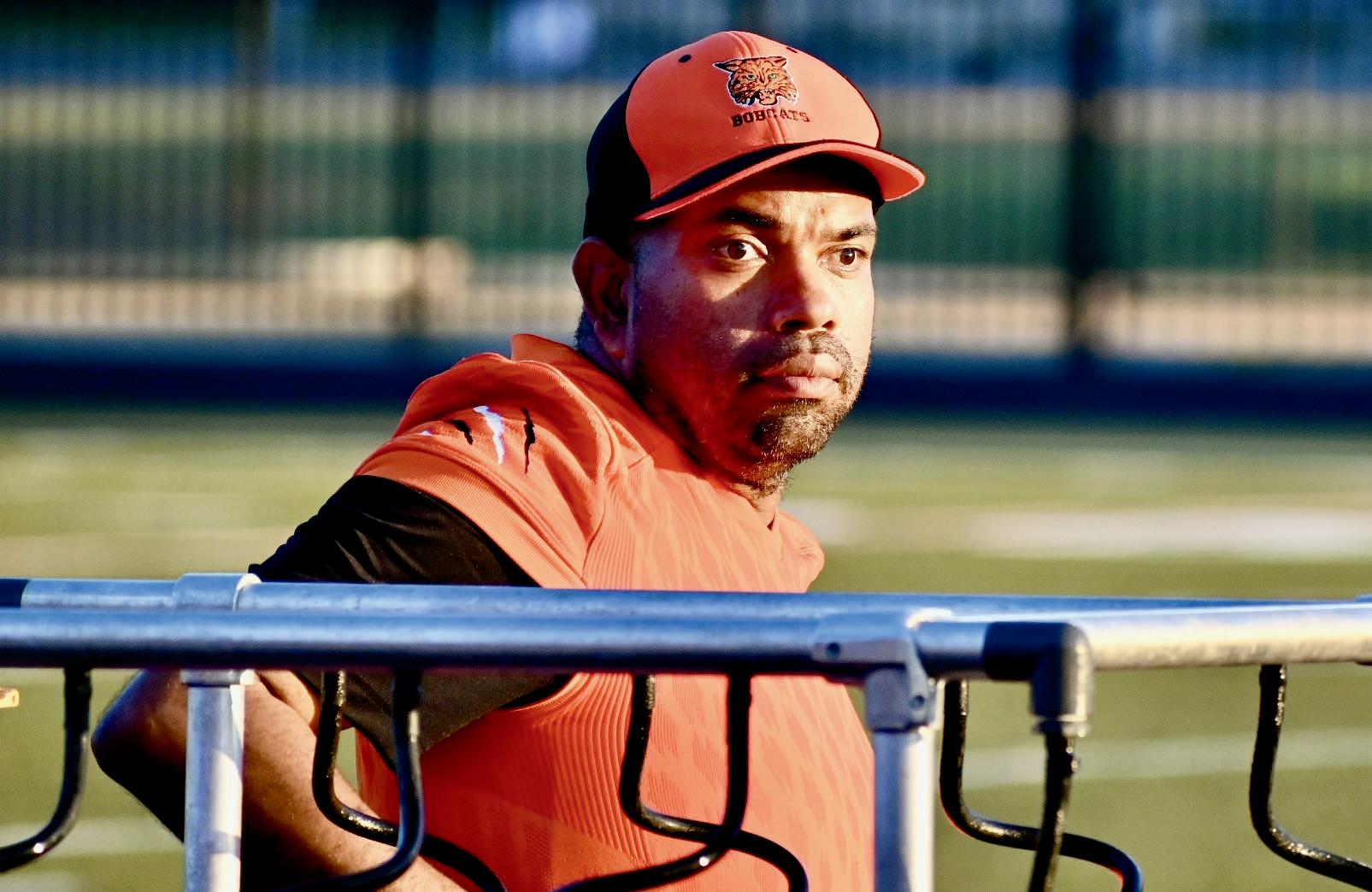
Barbara Martin
Refugio’s Joseph Ellerbee may not be able to fully express verbally his love for the Refugio Bobcats, but he has made it known without a doubt.
Ellerbee, 43, is a Bobcat through and through. All it takes is a mention of the word Bobcats and he will display a smile as big as Texas that can even be seen in his eyes.
Ellerbee, who has a speech impediment, enrolled in Refugio High School in 1997 after having moved to Refugio with his mother, Adriana Rodriguez. It was during his time at RHS that Ellerbee’s love for all things Bobcat football began to develop.
Ellerbee first made himself available to the team by
expressing an interest in running with the flag at the beginning of the first and third quarters of the varsity games.
Ellerbee graduated from RHS in 2003 and lived in other places for a while. But, when he moved back to Refugio, he took up where he left off, supporting the Bobcat football team.
Each day, from morning to the early afternoon, Ellerbee spends time at the Adult Day Care Center in Beeville. When the driver brings him back to town, Ellerbee does not go home. He is dropped off at the Refugio High School athletics facility and stays there until everybody else leaves, sometimes as late as 7 p.m.
“He’s basically the team manager,” Refugio ISD Athletic Director Jason Herring said.
Joseph Ellerbee shows off his two state championships rings. Contributed photo
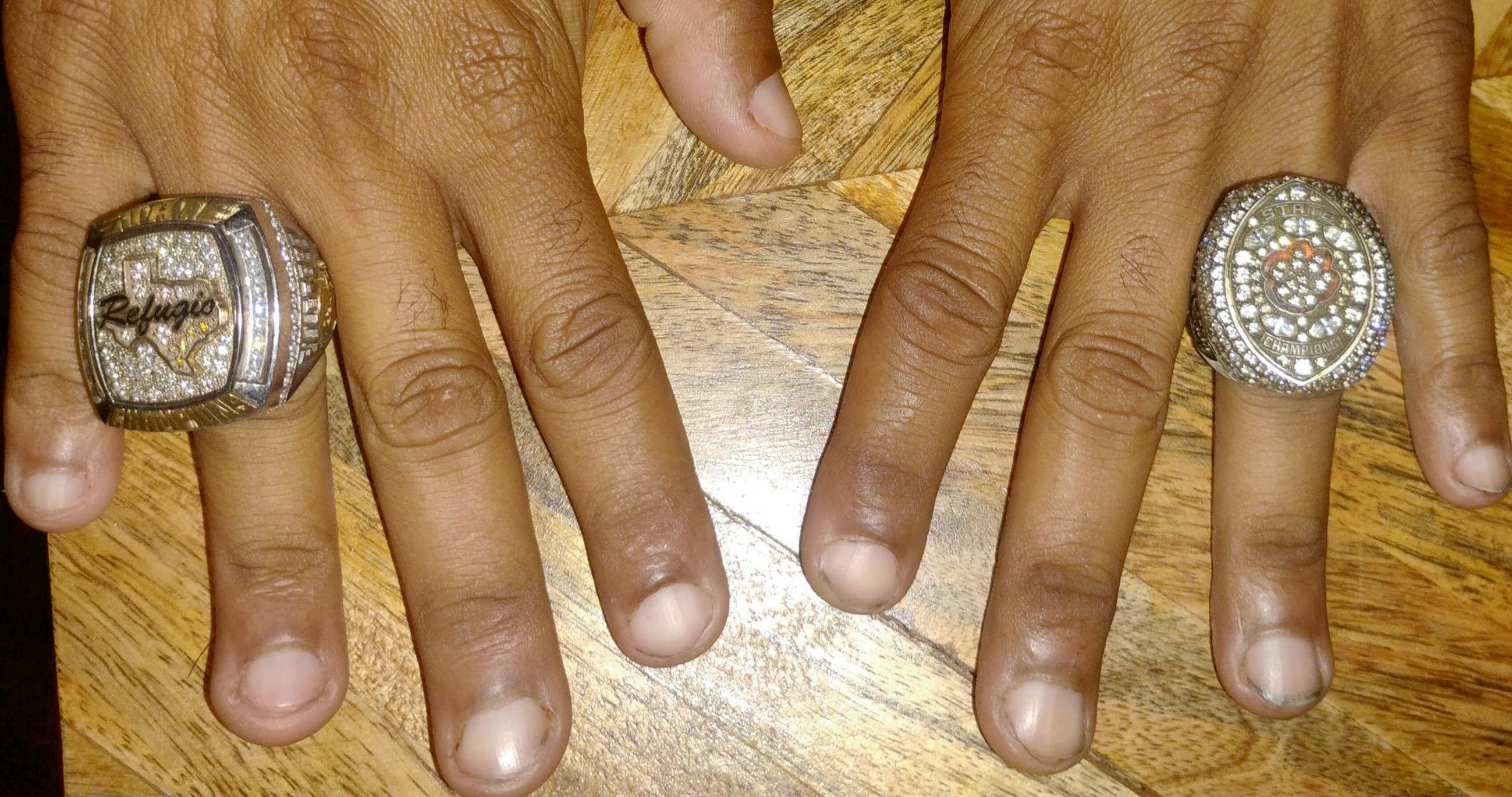
Ellerbee does anything he can to help the team. One of his daily responsibilities is taking care of the team’s hydration needs by keeping the water machine filled with ice and water.
“That is a big thing,” Herring said.
Ellerbee is also in charge of the offensive players’ wristbands, putting them out and taking them back up each day.
Today, Ellerbee not only runs with the flag, but he can be found at every practice and on the sidelines of each varsity game, in town and on the road, in an orange and black uniform wearing No. 74.
When the Bobcats have had practice on Thanksgiving Day, Rodriguez said she has had to leave family gatherings early in order to get her son back to Refugio so he wouldn’t miss it.
Likewise, missing a game is not an option. When Refugio was playing in Cypress earlier this season, Rodriguez told Ellerbee that she would not be able to get him to the game due to her having transportation issues.
“Call Coach (Herring),” Ellerbee told his mother.
They did that, and within 20 minutes a ride to Cypress
had been found.
Ellerbee said that he does not get caught up with the noise of the crowd at games. He said he is “focused on football.” In fact, when he is on the sidelines he encourages and motivates the players by telling them to “focus.”
Though he has never run the ball or made a tackle, Ellerbee is, without a doubt, an integral part of the Refugio Bobcat team, and he has two state champion rings (2016 and 2019) to prove it. His aunts and uncles purchased the 2016 ring for him and his mother purchased the 2019 one.
The 2019 ring is engraved with the No. 74. While that number has no known special significance, it is “his number.”
Ellerbee not only supports the varsity football team. He also attends the home games of the seventh- and eighthgrade teams, and the junior varsity team.
Ellerbee is a dedicated, loyal part of the Bobcat football team, but his love for sports does not stop there. He also likes to attend Refugio Little League Baseball games.
And it is no surprise that his favorite colors are orange and black.
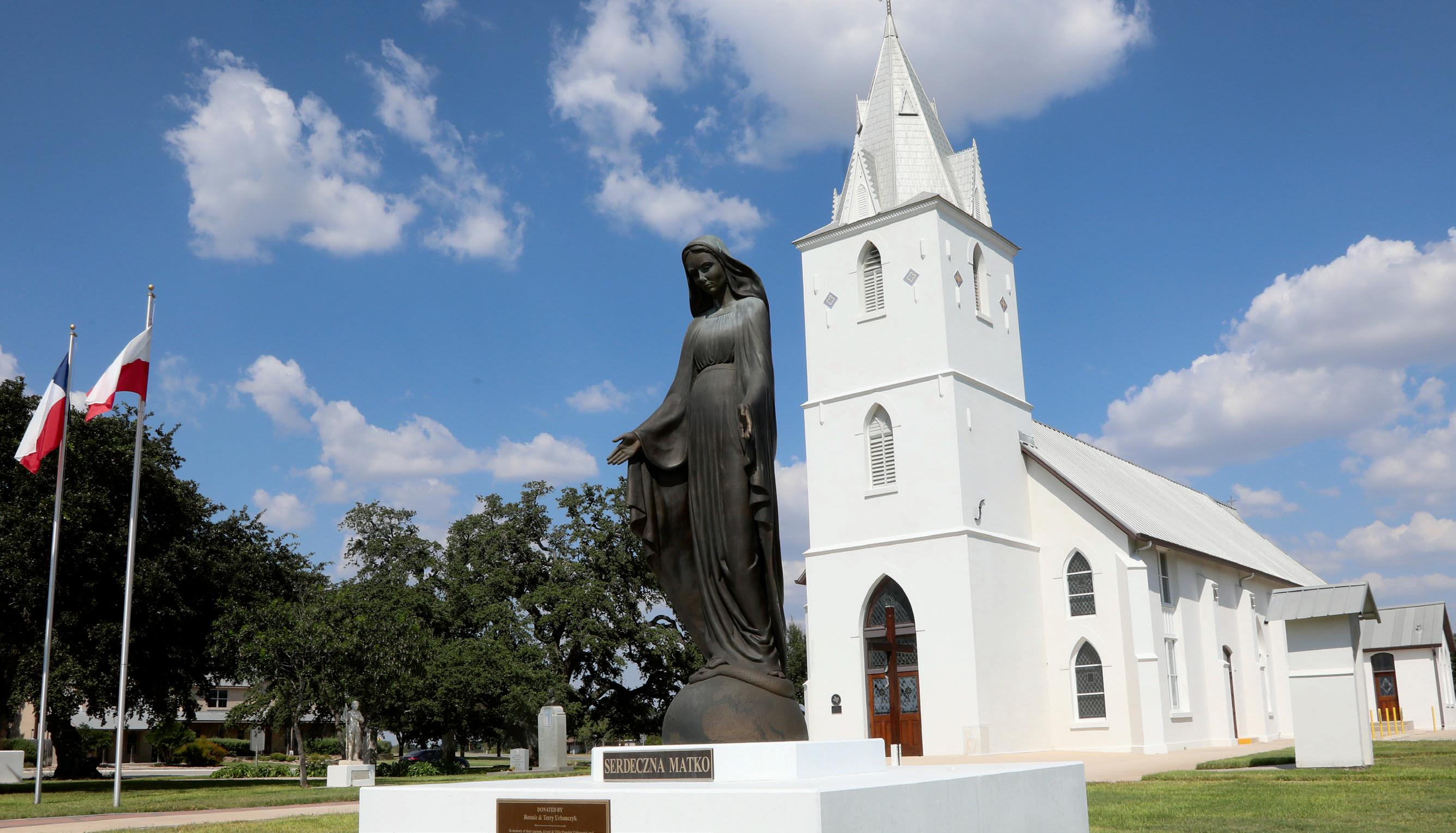
Above Photo
At The Polish Heritage Center in Panna Maria stands as a monumental tribute to the Polish immigrants who first settled in Texas over 150 years ago.
Located in Karnes County, Panna Maria is recognized as the oldest Polish settlement in the United States, and the center seeks to preserve the rich legacy of these settlers through education, inspiration, and a deep connection to Polish culture.
Panna Maria, which means “Virgin Mary” in Polish, was established in 1854, when a group of Polish immigrants, led by Father Leopold Moczygemba, made their way to Texas. PHC Executive Director Alice Poore explained that Father Moczygemba’s letter to his brothers back in Silesia, Poland, became the catalyst for this historic migration.
“He saw an opportunity for the Polish people to have a better life here,” Poore said, recounting how Moczygemba’s invitation led to over 100 people joining him on the journey.
Continued on page 34.
Immaculate Conception of the Blessed Virgin Mary Catholic Church in Panna Maria, the oldest Polish settlement in Texas, was originally built in 1855 near the oak tree where Polish settlers held their first Mass. The church holds Mass six days a week.
Laura Campbell photo
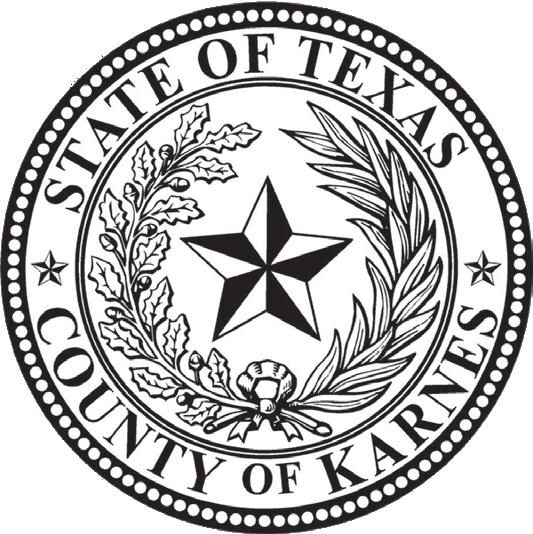

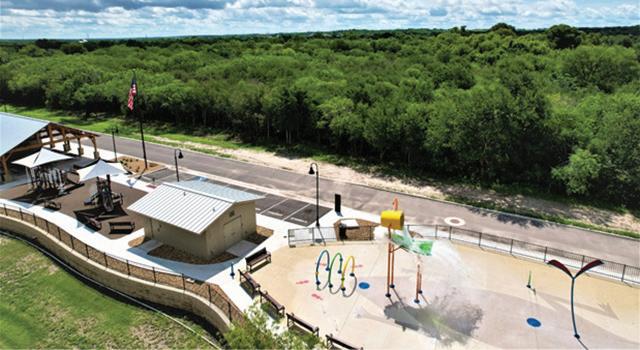

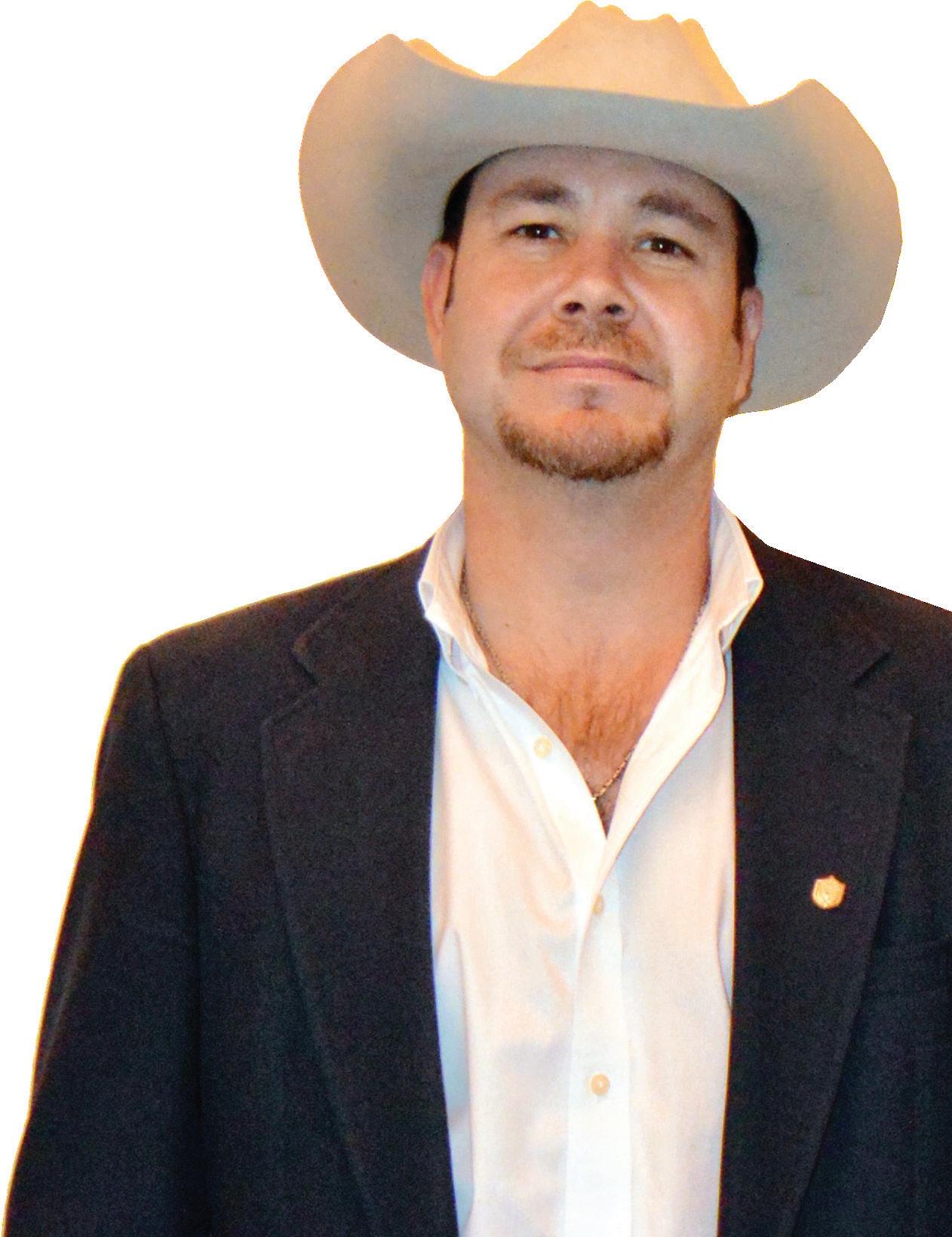

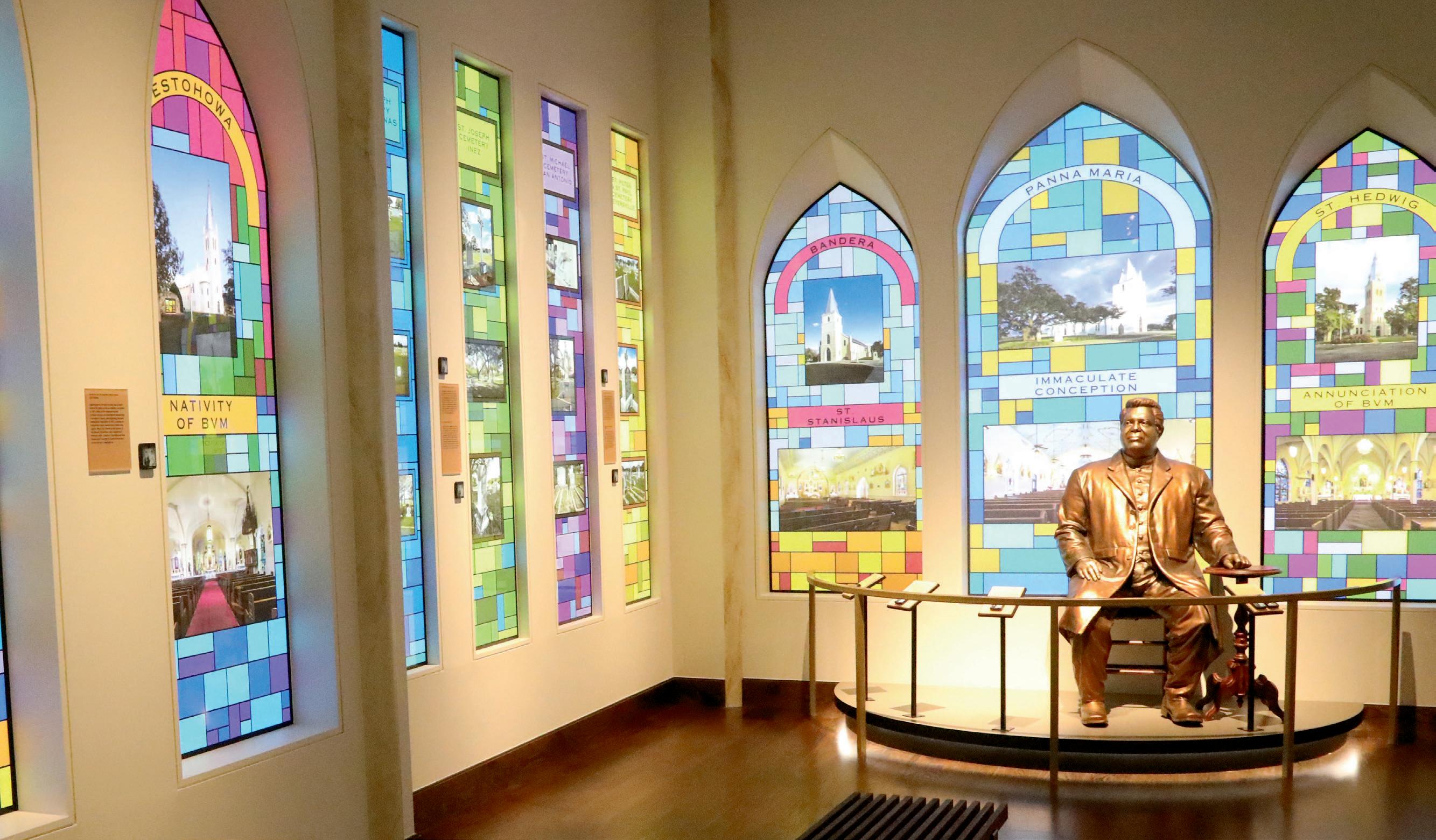
from the
immigration. A descendant of Polish immigrants,
received the Commander’s Cross of the Order of Merit of the Republic of Poland from President Andrzej Duda in 2019 for his contributions to the Polish community, including his leadership in founding the Polish Heritage Center. The center, which took 10 years to plan, was born from Yanta’s vision. Laura Campbell photo
Their journey was arduous, starting with a ship voyage aboard the Vesser, which landed them in Indianola, a port that no longer exists, but was located on Matagorda Bay.
“They walked and rode all the way to San Antonio,” Poore said.
When they arrived, Father Moczygemba led the group south to the land he had secured near the convergence of the San Antonio River and Cibolo Creek. They arrived on Christmas Eve and held their first Mass under a large tree that still stands today, a silent witness to the history it sheltered.
“That tree is over 250 years old, and it’s in the registry of the largest trees in Texas,” Poore said.
The Polish immigrants were not initially welcomed by other settlers in Texas, who, despite being immigrants themselves, were wary of the newcomers. However, Poore emphasized the role of the MexicanTexan community in helping the Poles adapt to their new environment.
“The Hispanic community reached out to them, embraced them, showed them how to farm the land and what to grow,” she explained.
This exchange created a lasting bond between the two communities, and Poore noted how Polish settlers often learned Spanish before becoming fluent in English.
“It kind of changed the taste of their food, too, as they substituted local spices for those they could no longer get from Poland.”
The PHC, a 16,500 square-foot facility, was established to ensure that the history of these early settlers is preserved and shared with future generations. It took 10 years to plan, and the center is the result of a vision held by Bishop John Yanta, a descendant of Polish immigrants himself.
Continued on page 36.







“Bishop Yanta knew from a young age that he wanted to be a priest,” Poore said, detailing how his deep admiration for both his Polish roots and the Hispanic traditions he encountered in his first parish inspired him to preserve his heritage.
When Eagle Ford oil was discovered, Yanta’s family became wealthy, and he used $4.5 million of his own money to start the planning for the PHC.
The center’s mission is clear: to retain for posterity the history, values, customs, and traditions of the Polish settlers in Texas. Its state-of-the-art exhibits are a highlight, featuring 15 interactive displays that guide visitors through the history of Poles in America, from their arrival in the 1850s to modern-day reconnections with their roots.
“It’s phenomenal,” Poore said. “We have these beautiful paintings that were turned into canvases, and each area of the exhibit pays tribute to a particular time or person in Polish history.”
The exhibits also offer an immersive experience, with audio and video components that bring the stories of these immigrants to life.

One of the most captivating aspects of the center’s history is its deeply local connection. The entire $14.5 million needed to build the facility was raised through donations, most of which came from local Texas communities.
“People were very blessed with Eagle Ford oil, and they wanted to support Bishop Yanta’s vision,” Poore said, though she acknowledged that not everyone in Panna Maria was on board initially.
“There were a few people who said, ‘Why don’t we just keep it quaint?’ But even with this huge center, the town has kept that quaint, special quality.”
The center itself is designed to resemble a cathedral, reflecting the deep Catholic faith that was central to the Polish immigrants’ identity. Steve Harding, of Steve Harding Designs, oversaw the creation of the exhibits, while Morkovsky + Associates, Inc., of San Antonio, a renowned designer of cathedrals, was responsible for the architectural design.
Continued on page 38.
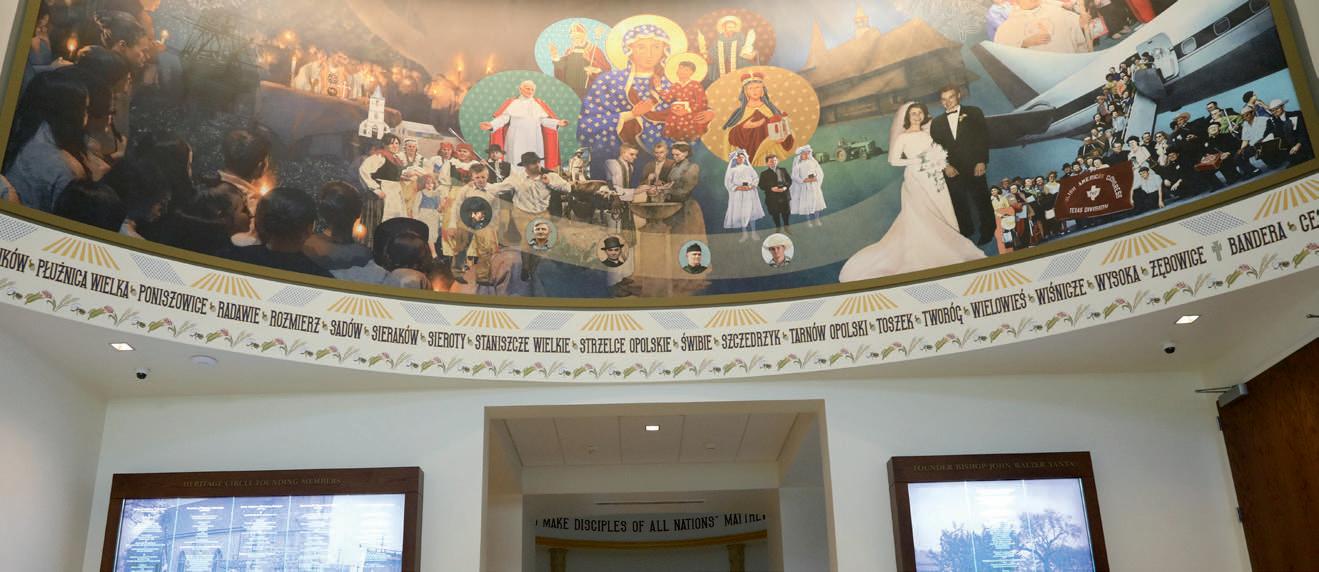
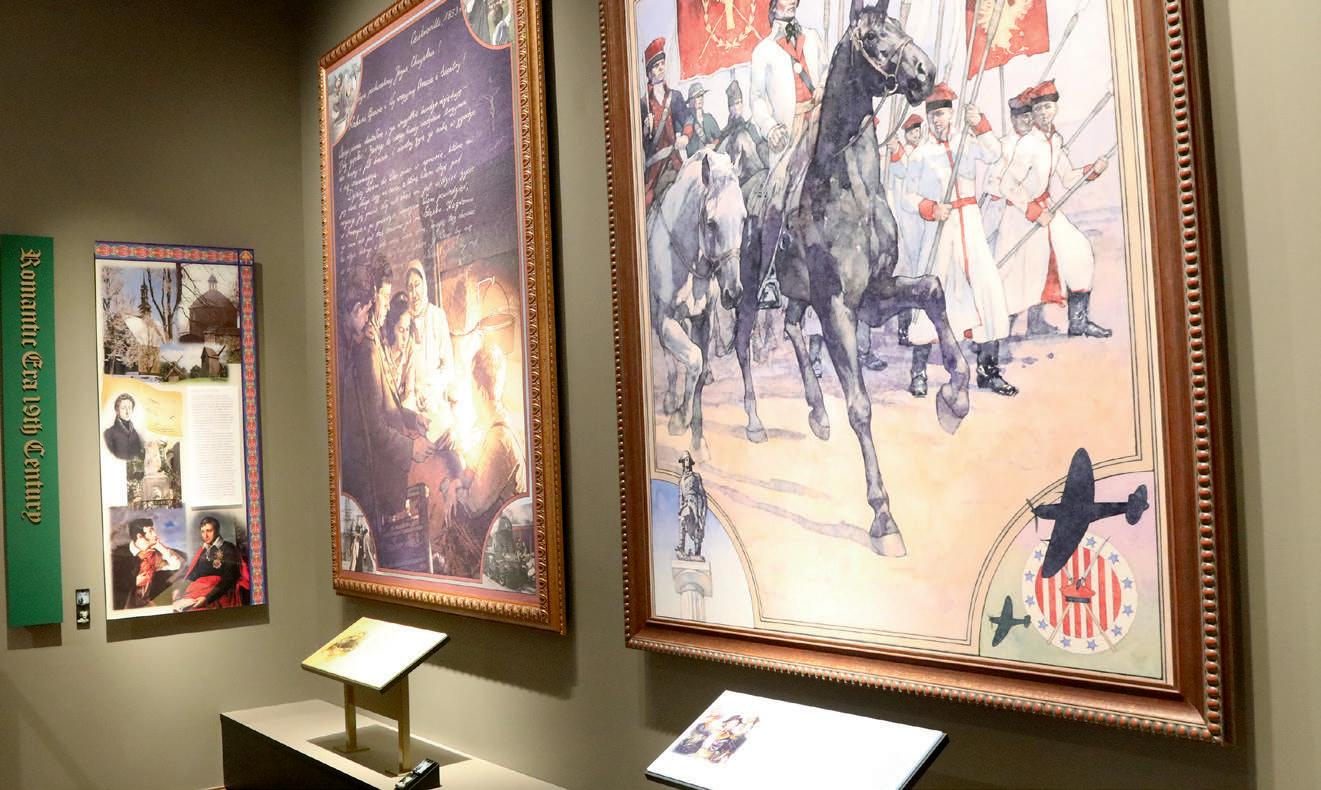

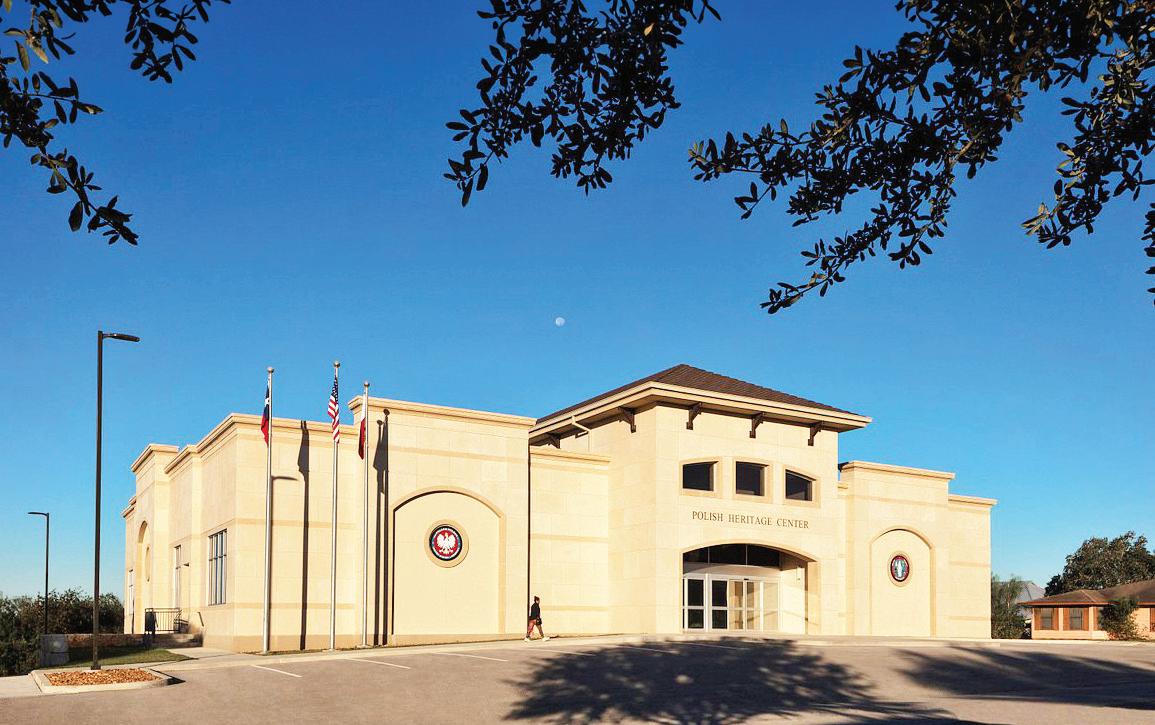









“It’s like a cathedral,” Poore said, describing the architectural beauty of the center.
Visitors can tour the exhibits and listen to audio stories that enhance their understanding of the Polish-American experience.
In addition to the center, Panna Maria is home to St. Joseph’s Catholic School, the first Polish Catholic school in the nation, and a painted church that stands as another testament to the Polish immigrants’ faith.
“That’s not the original church,” Poore explained. “The original one was struck by lightning, but the current one has been standing since 1857.”
The town’s buildings still bear traces of their origins, like the rock structure of Snoga’s Store, which hints at what the early settlement once looked like.
Poore believes that the most remarkable aspect of Panna Maria’s story is how these early Polish settlers managed to thrive despite the hardships they faced.
“When they got here, they built the church first before they built their homes,” she said, illustrating the depth of their faith.
They lived in dugouts and endured difficult conditions, but their resilience paid off. Over time, they founded 13 new communities, including Bandera, where some of the settlers became cowboys.
Many of these communities are home to painted churches, intricate and beautiful expressions of their Polish Catholic heritage.
The PHC is more than just a museum – it’s a place where visitors can connect with their past, learn about the trials and triumphs of the Polish settlers, and gain a deeper appreciation for the contributions they made to Texas and the United States.
“It’s a national treasure,” Poore said. “This is the oldest permanent Polish settlement in the United States, and we want to inspire and educate visitors from across the nation.”
With its immersive exhibits and dedication to preserving history, the PHC ensures that the legacy of the Polish immigrants who first came to Texas in 1854 will continue to inspire future generations.
For those interested in history, culture, or simply a beautiful place to reflect on the past, the center is a must-visit destination. “This is a tribute to those brave souls who left everything they knew to build a new life, and it’s a story worth telling,” Poore said. • • • •
During his fourth visit to the United States, Pope John Paul II became the first pope to visit Texas. On September 12, 1987, the pope conducted two public Masses but could not visit Panna Maria, just 50 miles from San Antonio. Instead, Panna Maria residents were invited to a papal audience at Assumption Seminary, organized for Texas’ Polish communities. Laura Campbell photo
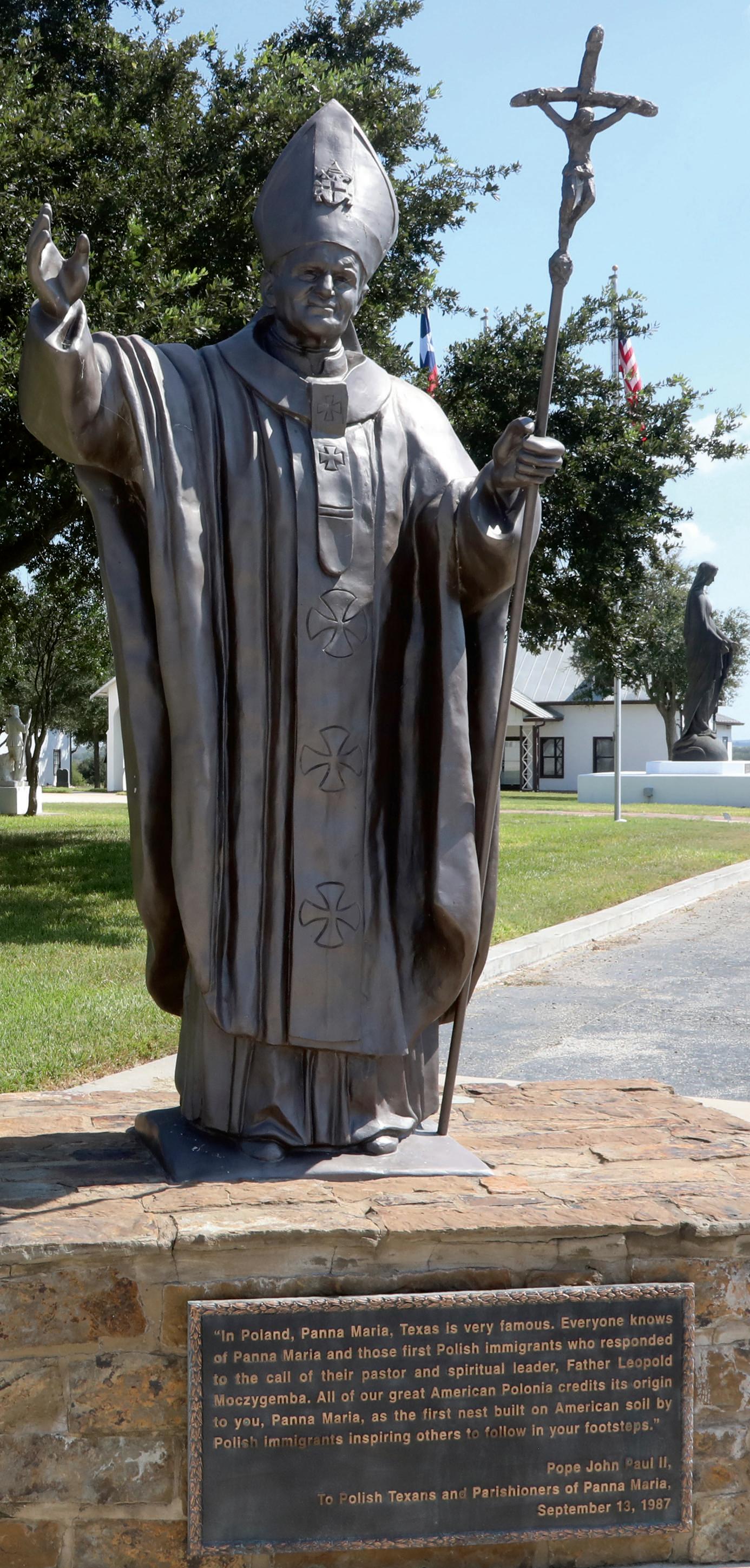






Cunningham
Sheriff Larry Busby is a well-known figure in Live Oak County and for good reason.
With a law enforcement career spanning 50 years, he has served as sheriff of the county for nearly 44, making him the longest-serving sheriff in Texas still on the job.
As a dedicated public servant, many things have changed over the years, but one thing that has not changed is his commitment to the people he protects as sheriff of a rural ranching community.
Surrounding the 79-year-old Busby in his office are memorabilia from throughout the years. It is a testament to the community’s appreciation for his dedication to the job.
One reason he has remained in office for so many years is his philosophy of treating everyone with respect.
“You treat people with respect, the way you want to be respected,” Busby said. “I never tried to bully anybody, never been in a fight with anybody. I just told them, this is the way it is, and we can do things easy or hard.”
Busby’s roots in the region run deep. From his family, he learned the value of hard work, sacrifice, and responsibility at an early age.
When Busby was born in April 1945, Hitler was in power and World War II was coming to an end. With his father working for the owner of a large ranch in McMullen and Atascosa counties, the family lived in a three-room shotgun house with no running water or electricity, using oil lamps for light and taking baths in a wash tub.
They were fortunate to have a flowing well down by the cattle pens, as well as a cistern that captured rainwater, and his dad had a .22 rifle that kept the family fed with venison. He never lived in a house with a telephone until he went to college.
Growing up, Busby loved the cowboy lifestyle, learning to ride horses at an early age and getting his first saddle when he was only 3 years old.
Continued on page 42.
Being a cowboy on his own ranch is a simple pleasure that Larry Busby enjoys.
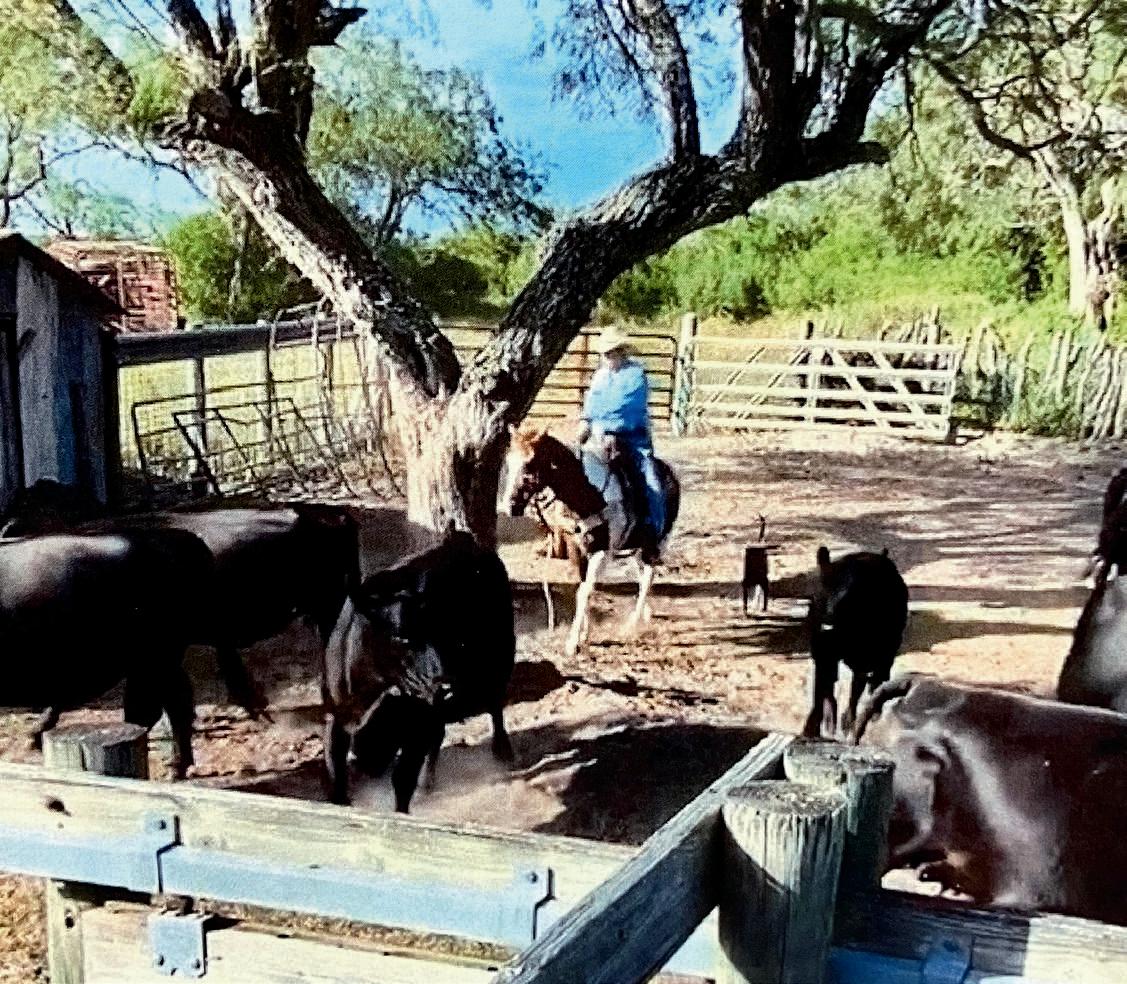






Top: Larry Busby was a Peace Officers Rodeo Association state champion in 1987. Contributed photo. Middle: Sheriff Larry Busby shows off his collection of spurs. Photo by Dr. Janet Cunningham.
Middle Bottom: Sheriff Larry Busby, still a cowboy at heart, leads the annual parade. Contributed photos. Bottom: Sheriff Larry Busby has enjoyed living his life as a cowboy. Photo by Dr. Janet Cunningham
“All I ever wanted was to live on a ranch and be a cowboy, just like my daddy,” he said.
However, around his junior year at Charlotte High School, he started thinking about getting a job that paid a little better. He enrolled in college at Texas A&I University (now Texas A&M University-Kingsville) and graduated in 1969 with a Bachelor of Science degree in agricultural business.
About this time, the Vietnam War was going strong, and he was preparing to be drafted, but he marginally failed the hearing test, possibly because of his many years of shooting without hearing protection. He was told he would be contacted about a re-test, and he figured he would be cleared for duty at that time.
Feeling certain he would be sent off to war, he did not want to get a job in the agribusiness field because he thought he would be leaving, so he went back to working cattle on various ranches.
One evening, Busby was attending a VFW dance in Alice and ran into a friend from college who was a math teacher at Mathis ISD. School was getting ready to start, and the friend stated they were in desperate need of a math teacher and suggested Busby come help them out. Busby told him he was waiting to be drafted, but the friend advised he could teach until he got called and it would “just be until they found someone else.”
So, armed with an emergency teaching certificate and a teacher’s edition math book, he went to teach seventh- and eighth-grade students.
Busby enjoyed the 8-to-5 job as a teacher. He could teach school during the day, and in the evening and on weekends, he could hunt, rodeo, and take care of the ranch his father had managed until his recent death.
The year ended with no recall by the draft board, so he signed a contract for another year. There was only one catch – he had to go back to college to obtain his teaching certificate. After three summers of going to college, he had his certificate in secondary education with math and business teaching fields.
Busby’s comfortable and, perhaps, mundane lifestyle changed one night in the fall of 1974. He was at the VFW in George West relaxing and shooting pool when a deputy making his rounds asked Busby to ride with
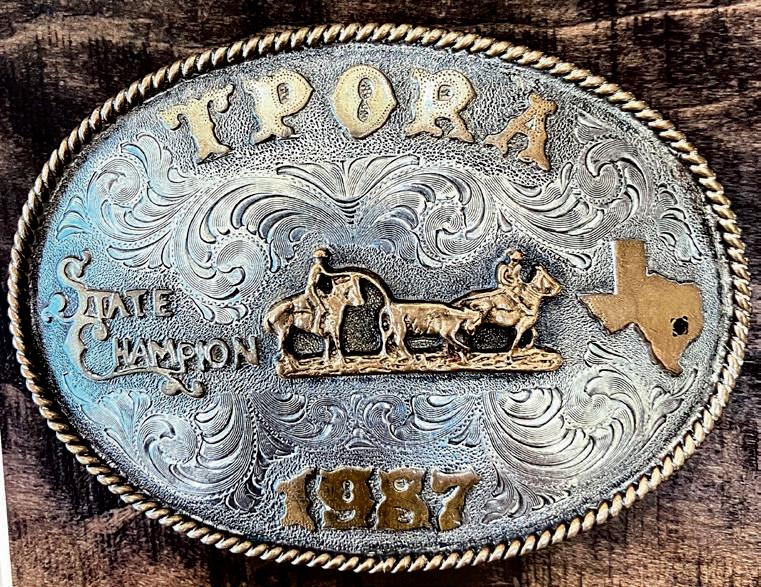
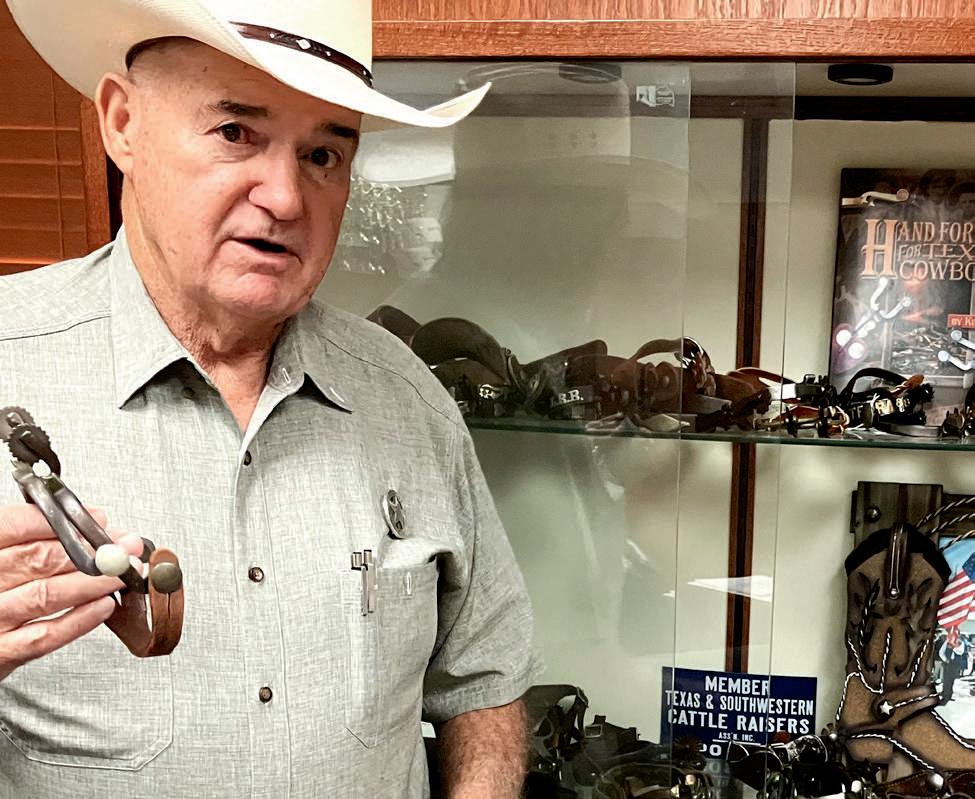

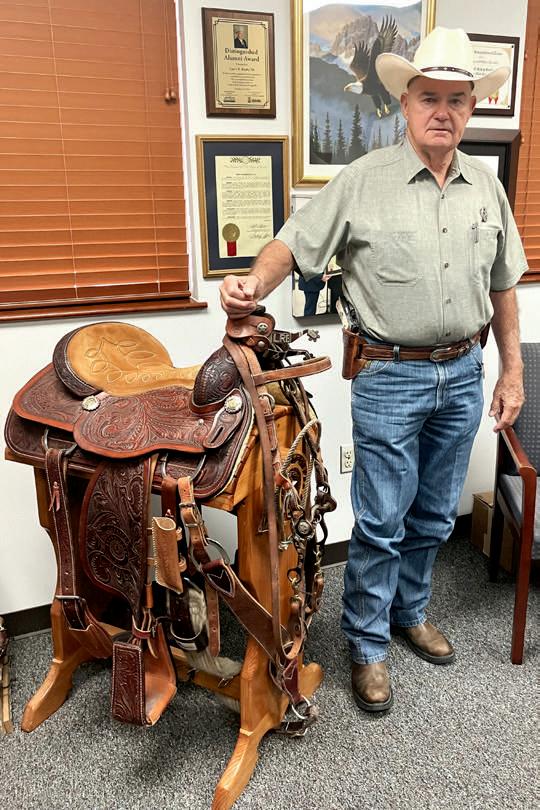
him. The ride-along proved to be a pivotal moment in Busby’s life.
In the 1970s, Live Oak County was growing with people and industry and along with that bars and fights. More weekend patrols were needed, and soon Sheriff Sam Huff deputized Busby. In the spring of 1975, Busby got his reserve peace officer certification.
One evening, Busby heard the sheriff ask his deputy partner to come into his office and close the door. Shortly after hearing loud voices, the deputy left, and the sheriff handed Busby the keys to the patrol car.
What should have been, “just until we find someone else” became five months of teaching during the day and riding patrol every evening until after midnight.
“I didn’t make much money as a deputy, but it paid more than $15 dollars a day working cattle,” Busby chuckled.
In the spring of 1978, Huff went to a meeting hosted by the Texas Commission on Jail Standards and learned about all the changes coming to law enforcement and especially jails. When he returned, he asked Busby to step into his office and close the door.
Remembering the last time someone went into the sheriff’s office and closed the door, Busby was thinking, “What did I do wrong?” Instead, Huff said to Busby, “You want to be sheriff? I’ve had enough. If you want to run, I’ll back you.”
With the election two years away, Busby started preparing.
To improve his chances, Sheriff Huff said he would make Busby a full-time criminal investigator, which would keep him off the streets and from arresting the people who might vote for him when the time came. It was a difficult decision, since he was making more money teaching school, but he really liked the work of investigating.
At the end of the school year, he made the choice to obtain his police officer certification, so he resigned his teaching position and went back to college during the summer. In 1978, he graduated from the police academy and he has been a Master Peace Officer since the certification became available.
When Sheriff Huff’s term ended, Busby ran for sheriff against two opponents. He won the election with a majority of the votes with no run-off and was sworn in as Live Oak County Sheriff/Tax Assessor-Collector on Jan. 1, 1981.
At the end of his first term, he had one opponent, but Busby received 92% of the vote and it was a long time after that before anyone ran against him.
Although he is a Republican now, during those years, the Texas Democrats were considered the conservative party and were the majority in the state. In fact, Busby was the last Democrat elected to a local office in Live Oak County.
For the first three-plus years, Busby worked from 8
a.m. to midnight or later every day. In those years, he had only taken two three-day vacations – once in 1983 with some friends and the other in 2013 to get married to Jo Ann.
The personal dedication and responsibility are part of his deep roots growing up in the cattle ranching business.
“You don’t take days off in the ranching business,” he said with a grin. “Cows have to eat every day.”
Despite the long hours, when he leaves the office, the work stays there.
“The only reason I can work all those hours, is that when I leave, I clear my mind,” Busby said.
Things in law enforcement and the county have changed over the years, including the use of body cameras, specialized technology, and a new jail in 2009. The U.S. Census in 2000 indicated that the population of the county had surpassed 10,000 citizens, so as required by law, the office of sheriff and tax assessorcollector was separated into two distinct offices.
Busby is proud to be from Live Oak County, the only place in Texas with two senior sheriffs – W.A. “Albert” Smith, who served as sheriff for nearly 38 years, and himself.
Busby has worked all types of cases, including capital murders, robberies, kidnapping, rape, and many drug cases. He remembers one of his first calls before he even became sheriff, an attempted murder case.
The victim was seriously injured and unable to speak because of a gunshot wound to the head. Busby and a DPS trooper rode in the ambulance with the victim and were able to obtain crucial information about the attackers through hand gestures.
Some cases still weigh heavy on his mind. About the second or third year as sheriff, Busby was called to a gruesome murder scene outside of Three Rivers. The man’s body had no identification, but by working extensively with an FBI fingerprint analyst, he was able to find out the name of the victim.
Busby and Texas Ranger Glen Krueger spent many hours on the investigation. They had a fairly good idea who committed the crime and the car they were driving, but he could not track down the evidence to prove it.
“If we ever find that car, we’ll be able to arrest the killer,” Busby pledged.
Busby’s sense of duty extends beyond his job as sheriff. Serving as college instructor and on the law enforcement advisory committees at both Coastal Bend College and Del Mar College, he helps prepare the next generation of law enforcement professionals. He is also a member of the Live Oak County Boys and Girls Club Board of Directors, the George West Lions Club, Masonic Lodge, Sheriffs’ Association of Texas, Coastal
























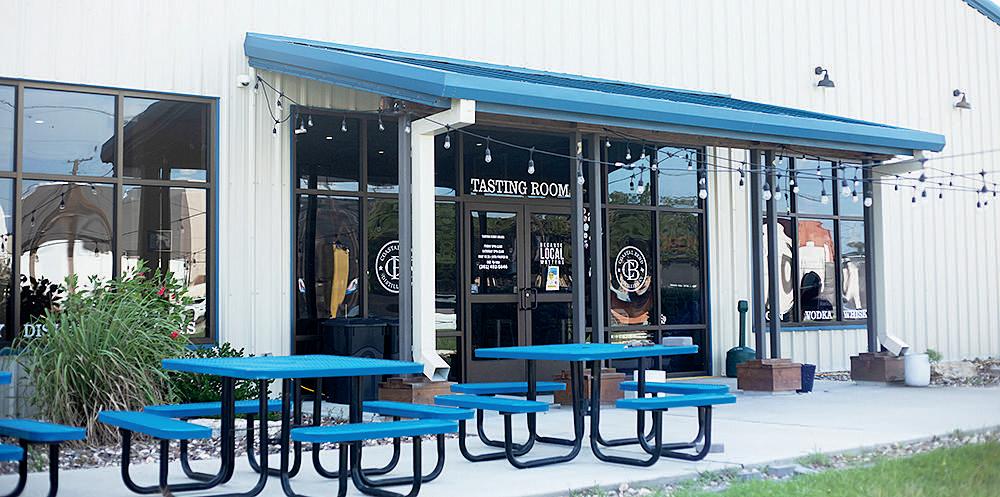
Coastal Bend Distilling Co., a hidden gem nestled in the heart of Texas, is making waves in the world of craft spirits with their exceptional range of products. Recently, the distillery garnered well-deserved recognition and accolades for their gin and vodka, solidifying its position as a rising star in the industry.
Coastal Bend Distilling Co., founded by Kenneth and Eveline Bethune, has been quietly perfecting their craft over the years, and their hard work has not gone unnoticed. Despite being a relatively small operation, they have managed to stand out from the crowd and impress seasoned judges and connoisseurs alike.
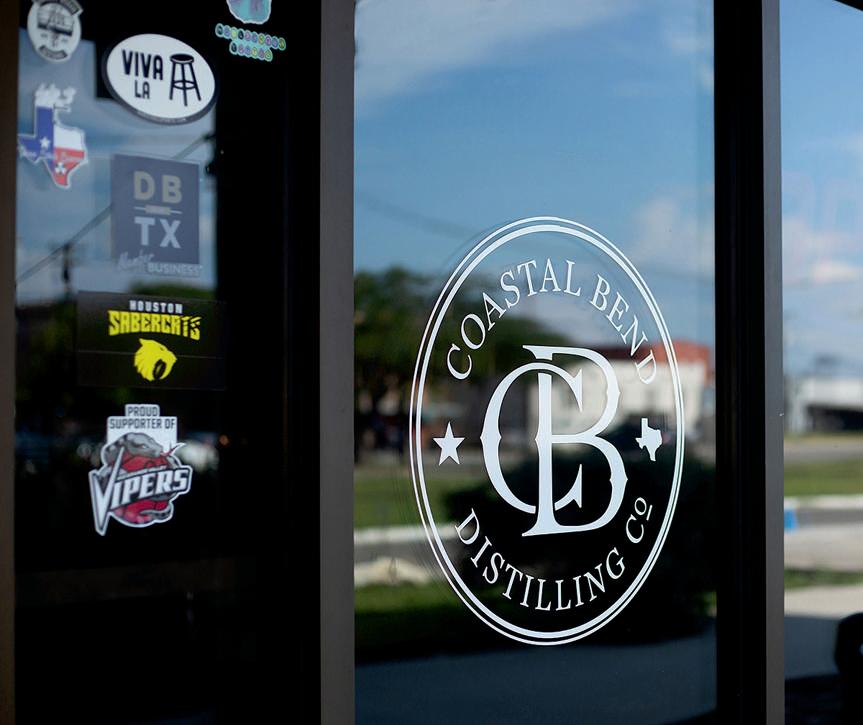
Coastal Bend Distilling Co. seized 2024 Best Distillery in Best in Bee and the Local’s List for the Coastal Bend. Their commitment to using only the finest ingredients and traditional vapor infused distillation methods set them apart from the competition. Coastal Bend Distilling Co.’s Lucky Star Gin has previously brought home other awards, including a silver taste award at the 2020 John Barleycorn contest, a bronze medal in 2021 from the American Craft Spirits Association, and a tasting score of 90 from the 2020 Ultimate Spirits Challenge. The distillery’s owner & managing proprietor, Kenneth Bethune, credits the gin’s success to its unique flavor profile that emphasizes citrus peel botanicals and scales back on the often polarizing juniper berry.
The distillery’s foremost spirit, Live Oak Vodka, has also brought home numerous awards. Most recently, Live Oak Vodka received a score of 91, or “Highly Recommended” from the Ultimate Spirits Challenge. Judges described the vodka as “remarkably clean, with soft expressions of wet stone and rainwater. Light whispers of Douglas Fir and American Oak are distinct, enjoyable, and very subtle.” The vodka’s previous awards also include a 2020 silver medal for taste at the John Barleycorn Awards and a double gold that same year for unique label design.
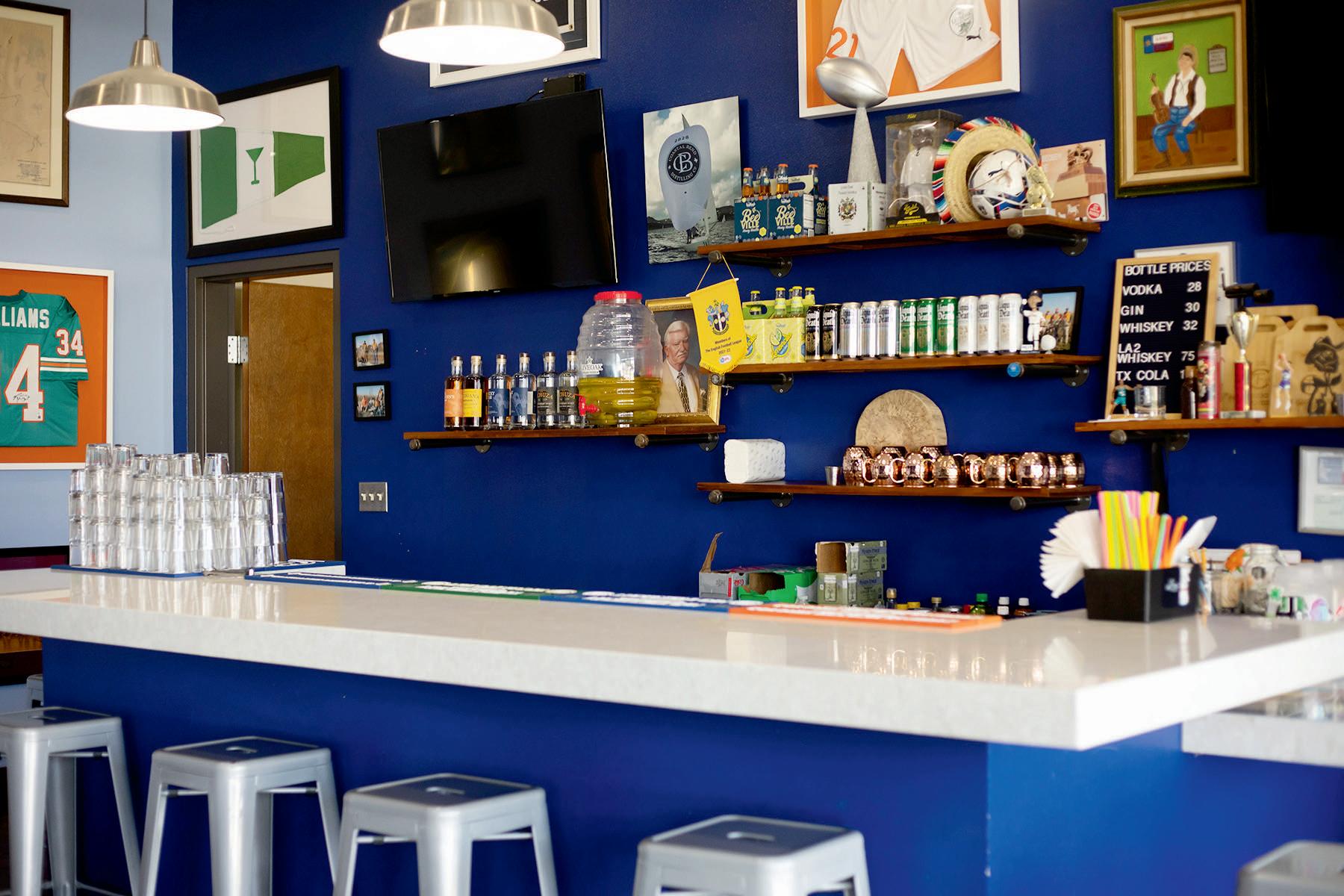
Bethune and Coastal Bend Distilling Co.’s head distiller, Craig Olson, expressed gratitude for the awards. “We are humbled and thrilled to receive such recognition for our craft.” Said Olson, “It’s a testament to the hard work of our team and our passion for producing exceptional spirits that embody the true essence of Texas.”
The awards have also sparked increased interest in Coastal Bend Distilling Co.’s tasting room, where visitors can experience their award-winning spirits first-hand. With the charming ambiance of Beeville and the warmth of Texan hospitality, it’s no wonder enthusiasts and tourists are flocking to sample the distillery’s offerings. Open on a limited basis, the tasting room serves craft cocktails featuring the distillery’s array of spirits: Live Oak Vodka, Lucky Star Gin, Colonel Fannin’s Whiskey, and La Lechuza Agave Spirit.
Coastal Bend Distilling Co. continues to create a buzz in the spirits community, and their future appears to be as bright as the Texas sun. As word spreads about their exceptional products and commitment to quality, it’s likely that this once-hidden gem will become a shining star in the world of craft distilling.
The distillery’s spirits can now be found across Texas with a significant presence in the Coastal Bend, as well as in the San Antonio and Austin metroplex areas. New distribution growth has been established in Houston and Dallas markets, and the distillery’s General Manager, Robert J. Nollen, II, says that distribution has more than doubled in 2023.
For those eager to savor the flavors that have captured the hearts of judges and locals alike, a visit to Coastal Bend Distilling Co. in Beeville, Texas, promises an unforgettable experience. For those unable to visit the tasting room, the distillery’s website offers an interactive map where you can search products available at bars, restaurants, liquor stores and more nearby.
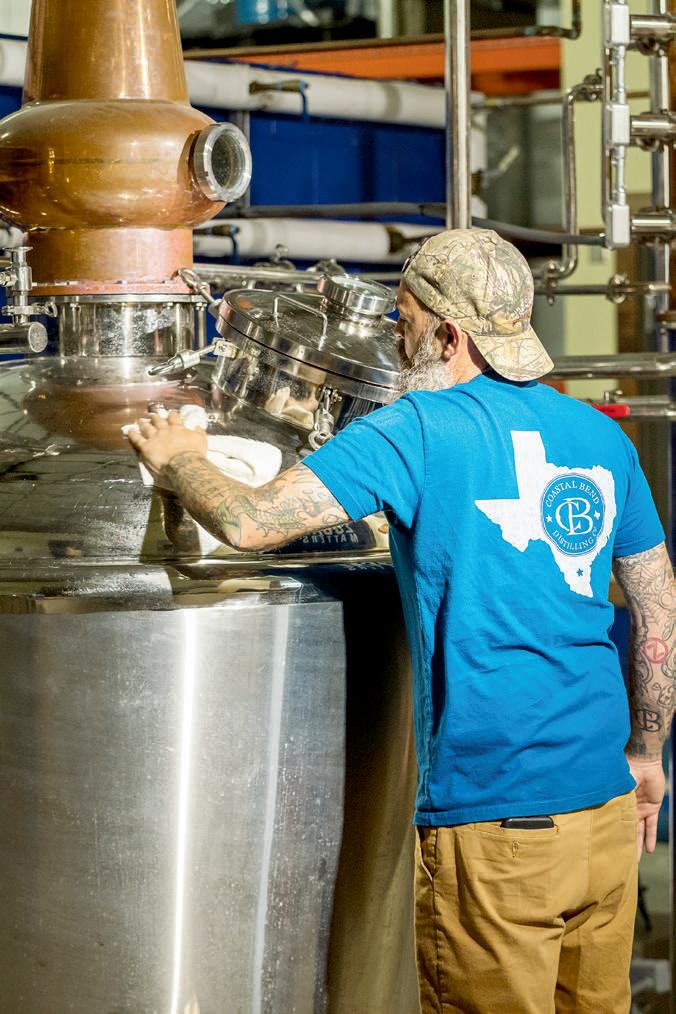
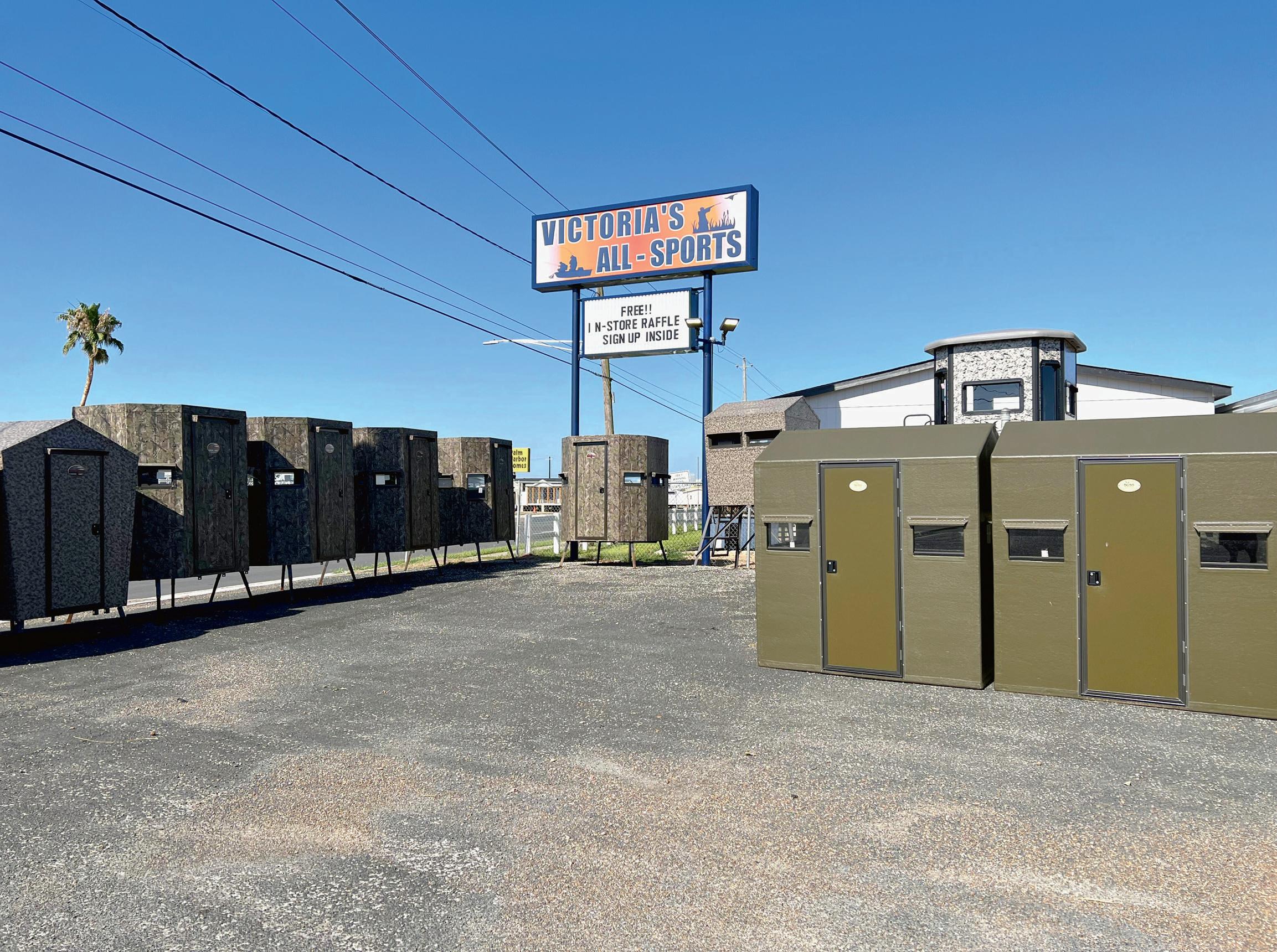
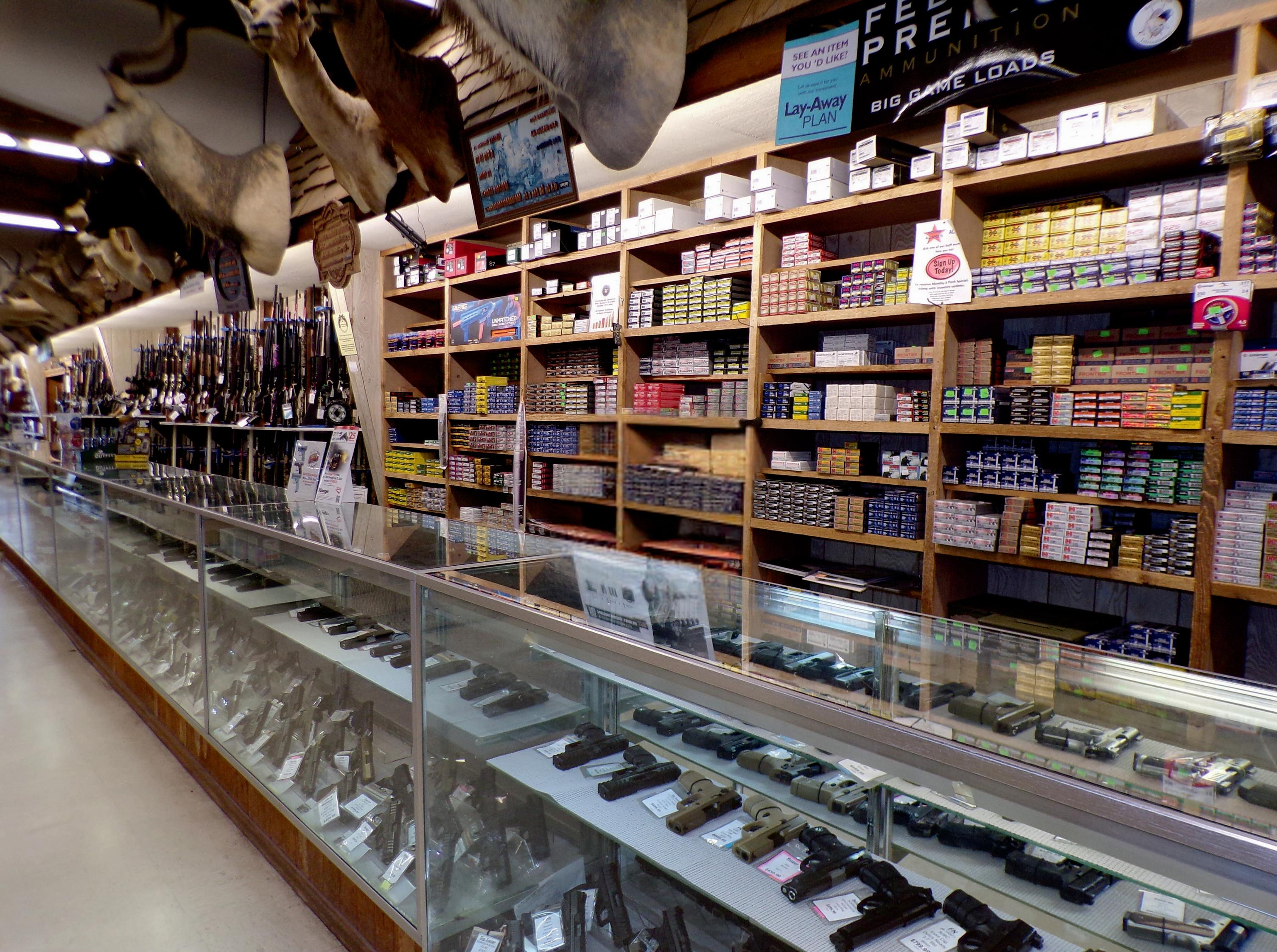

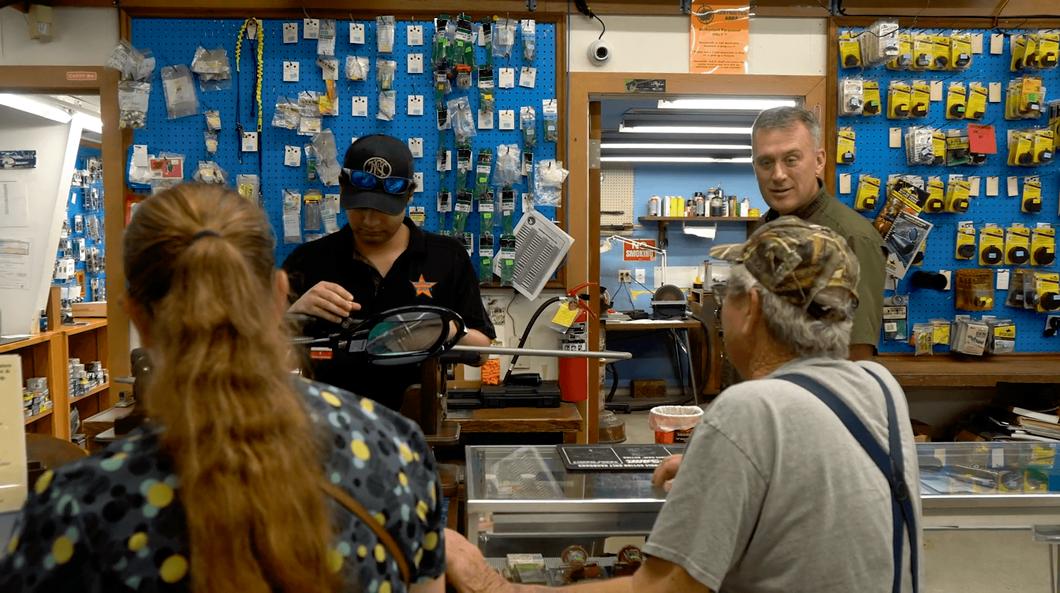

Since 1971, Victoria All Sports, a family-owned business, has proudly stood as a retail giant in hunting and fishing. With the vision and dedication of the Hester family, the store has become a local destination for outdoor enthusiasts. When you step inside the doors you will be greeted by friendly and knowledgeable staff ready to help you stock up on your next hunting expedition, fishing trip, or camping getaway. The extensive selection of products is sure to meet your needs. Victoria All Sports prides itself on their in-house gunsmithing services, catering to all your firearm maintenance and customization requirements.
Victoria All Sports not only has a deep commitment to customer satisfaction but also a commitment to contributing back to various county organizations by assisting and supporting 4H, NWTF, Whitetails Unlimited, Volunteer Fire Departments, CCA, Rotary Club, Serve Outdoors, various schools, and many additional fundraising benefits.
As you explore the store, you will quickly discover that South Texas's premier hunting and fishing retail store is not merely a place to shop but a haven for a community of like-minded individuals who share a love for nature and its bounty. The establishment embraces tradition, expertise, and a deep-rooted connection to the great outdoors.











PROUDLY PROUDLY
DISTILLED HERE DISTILLED HERE IN BEEVILLE, IN BEEVILLE, SOUTH TEXAS SOUTH TEXAS